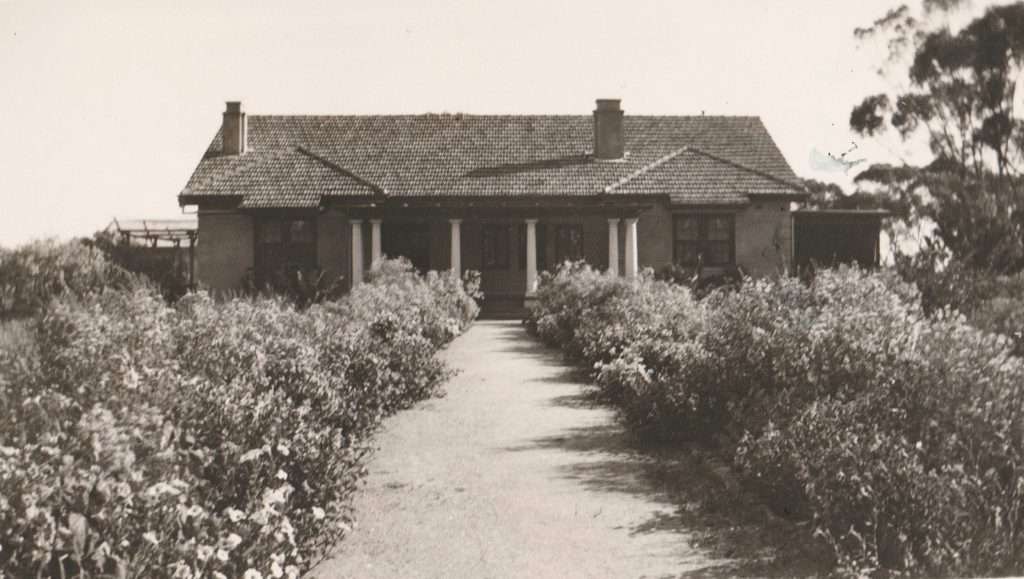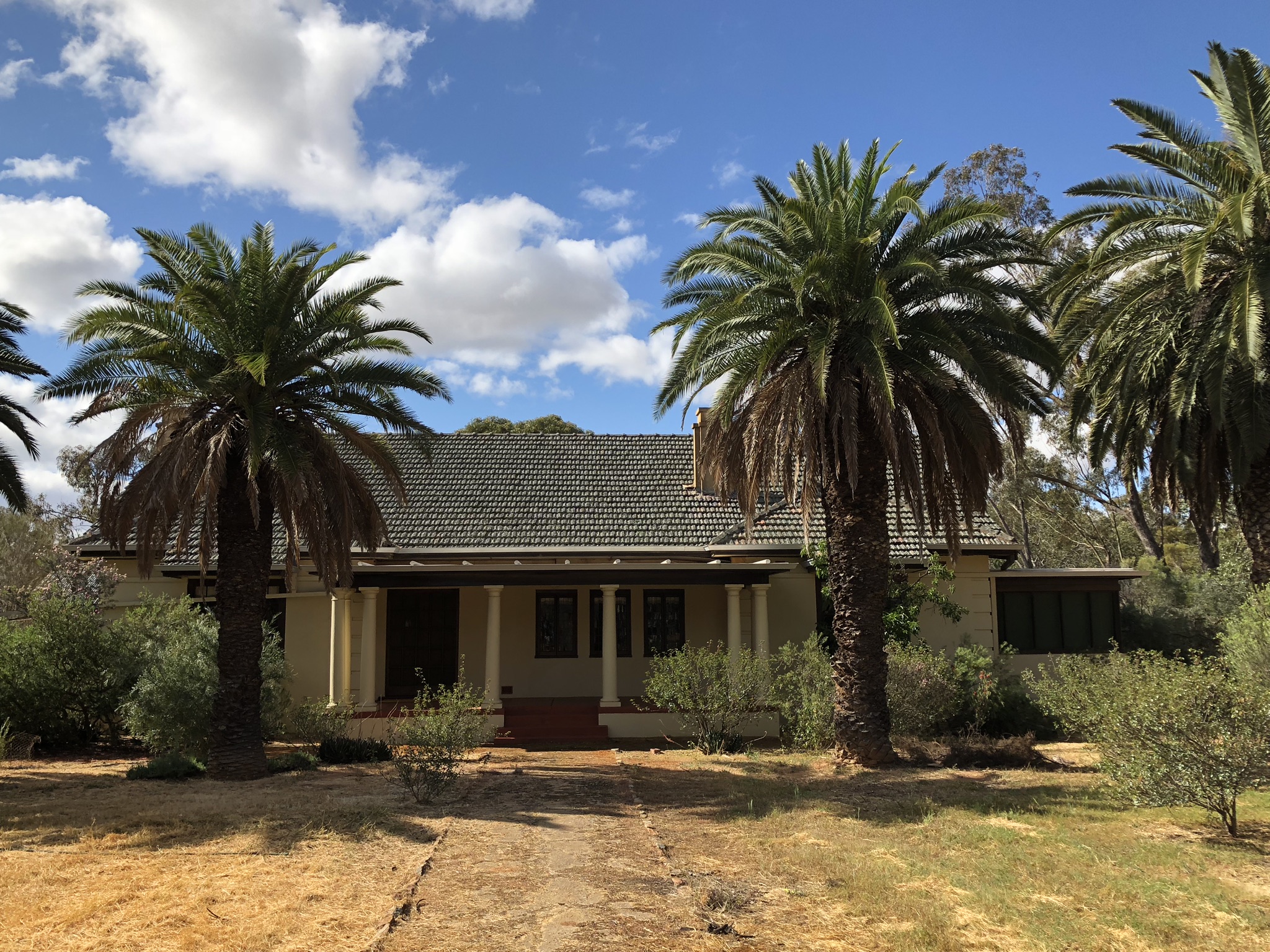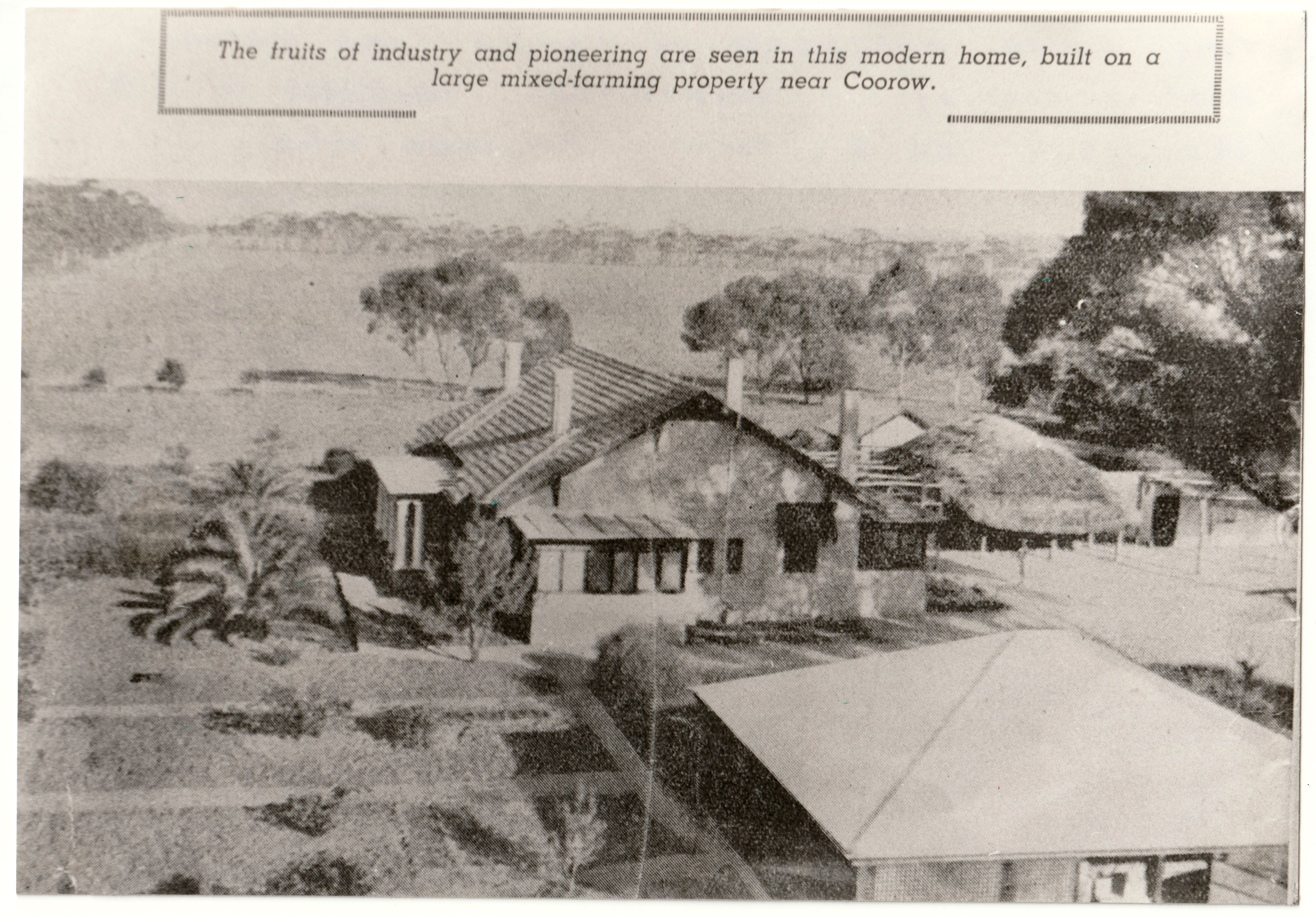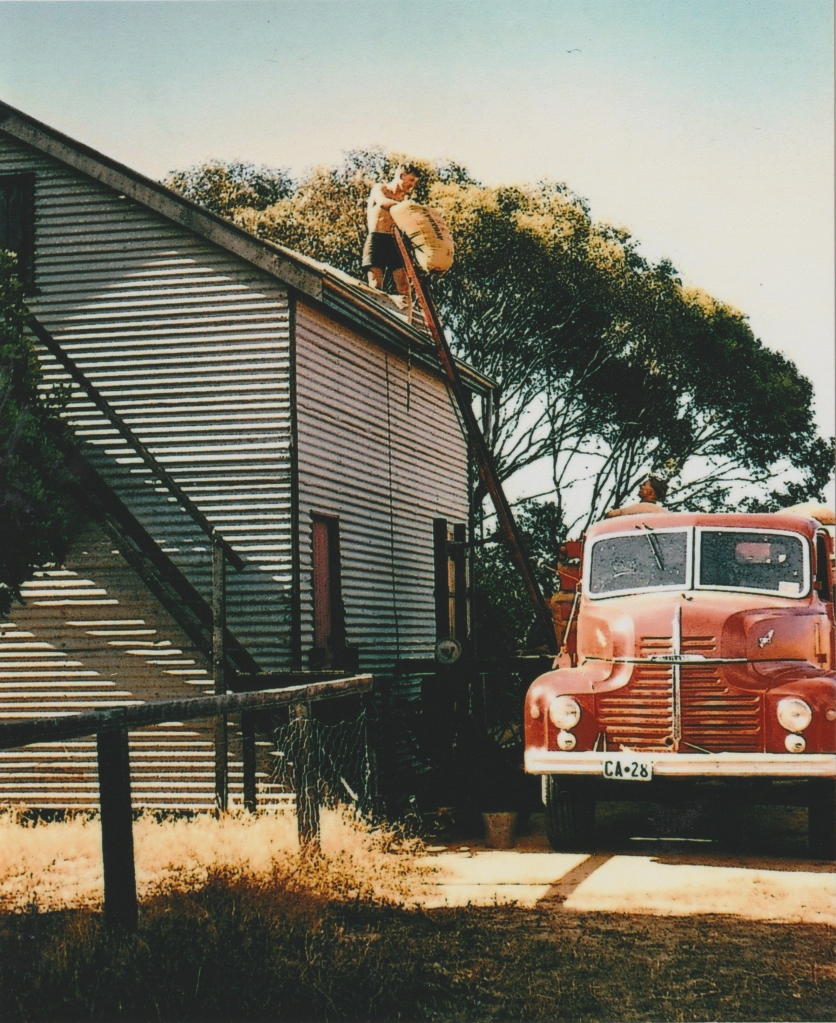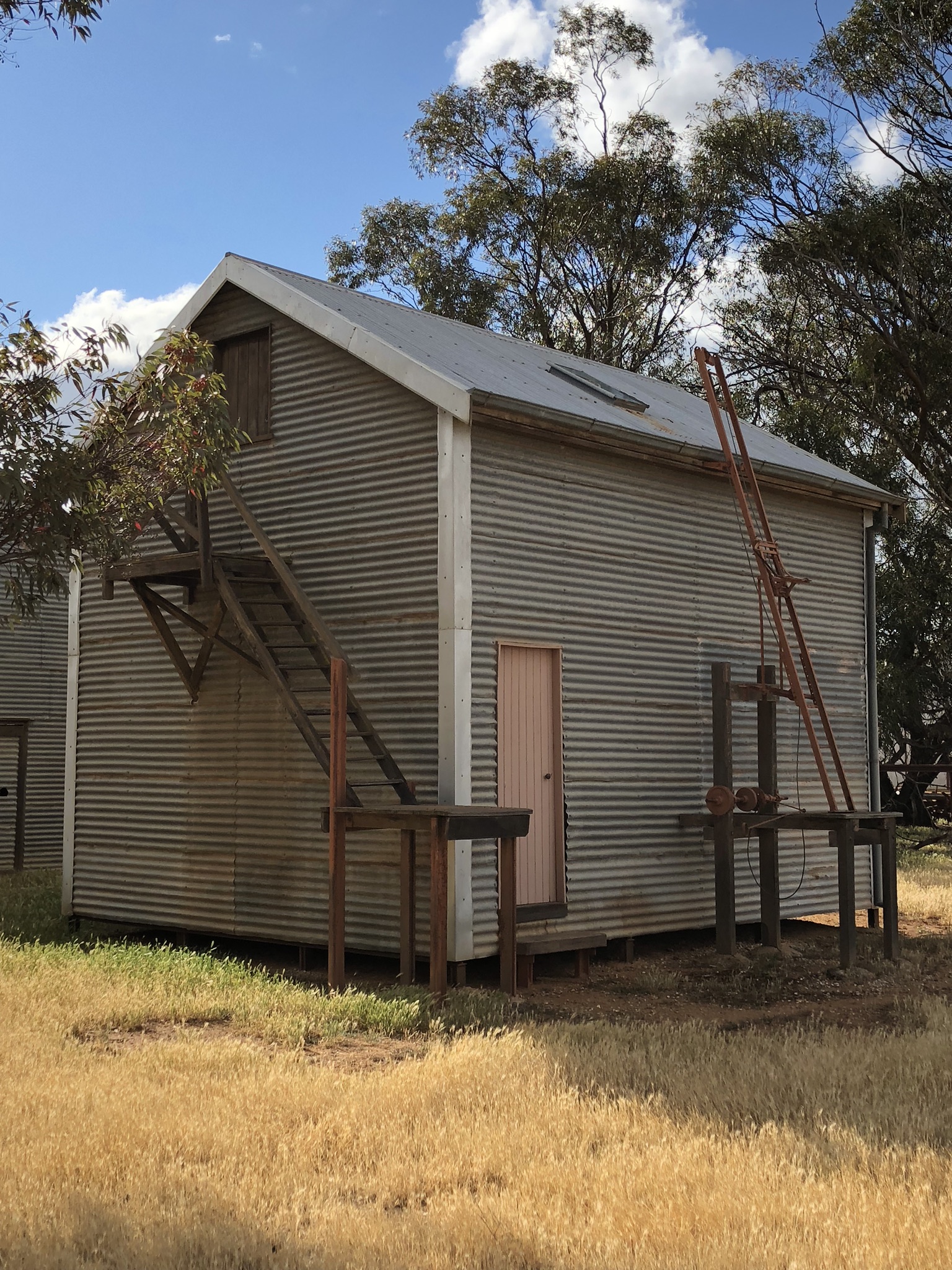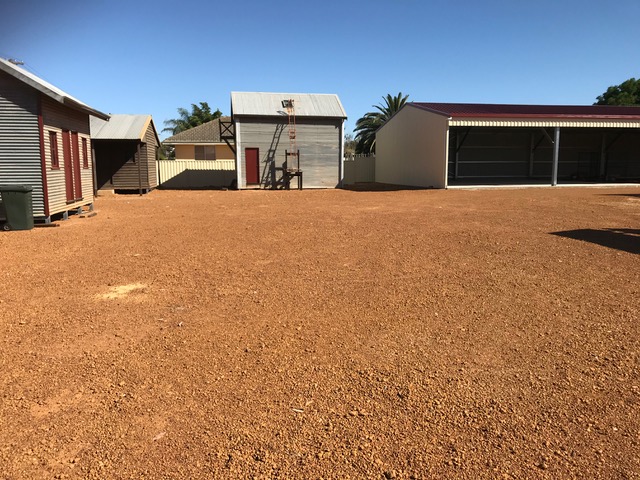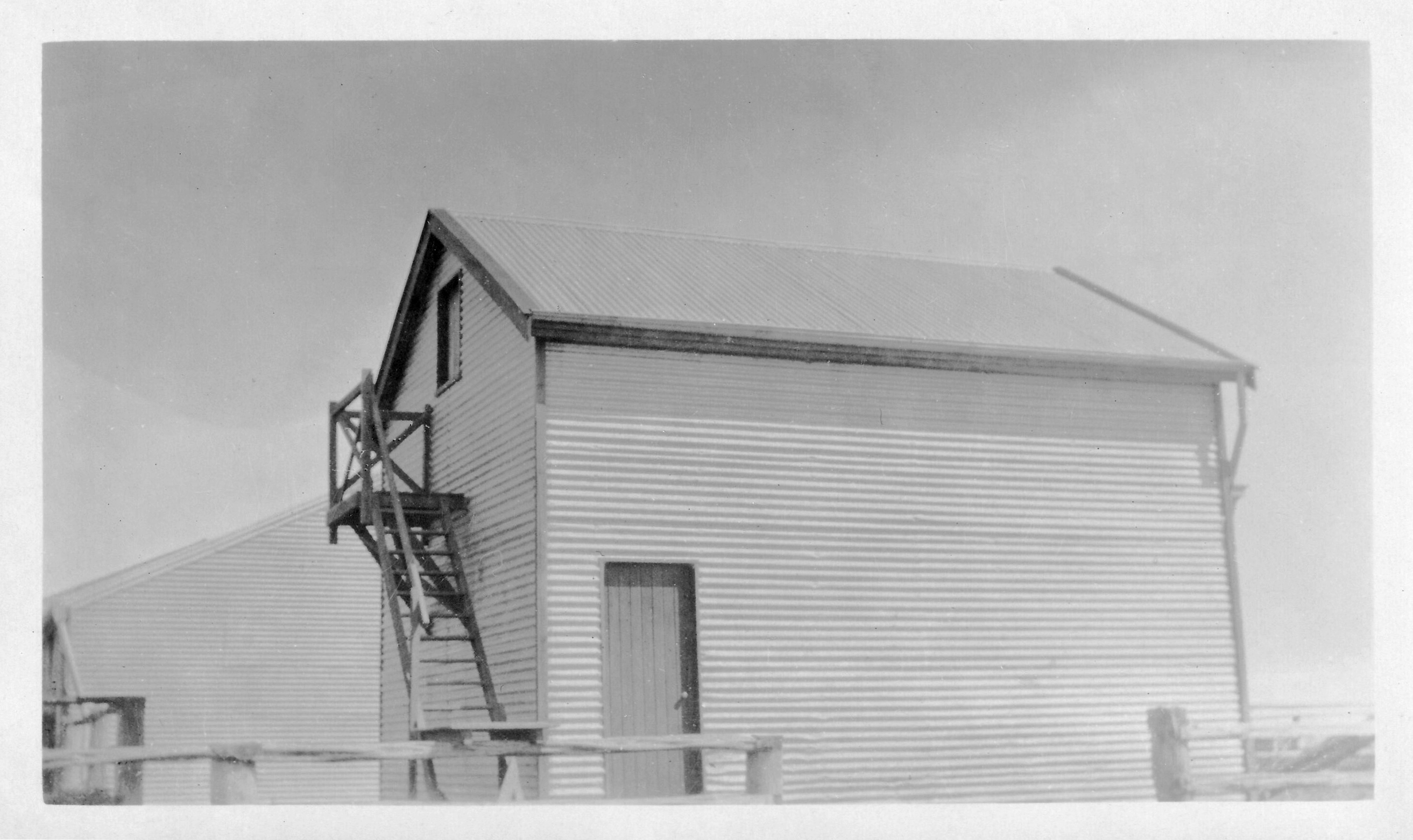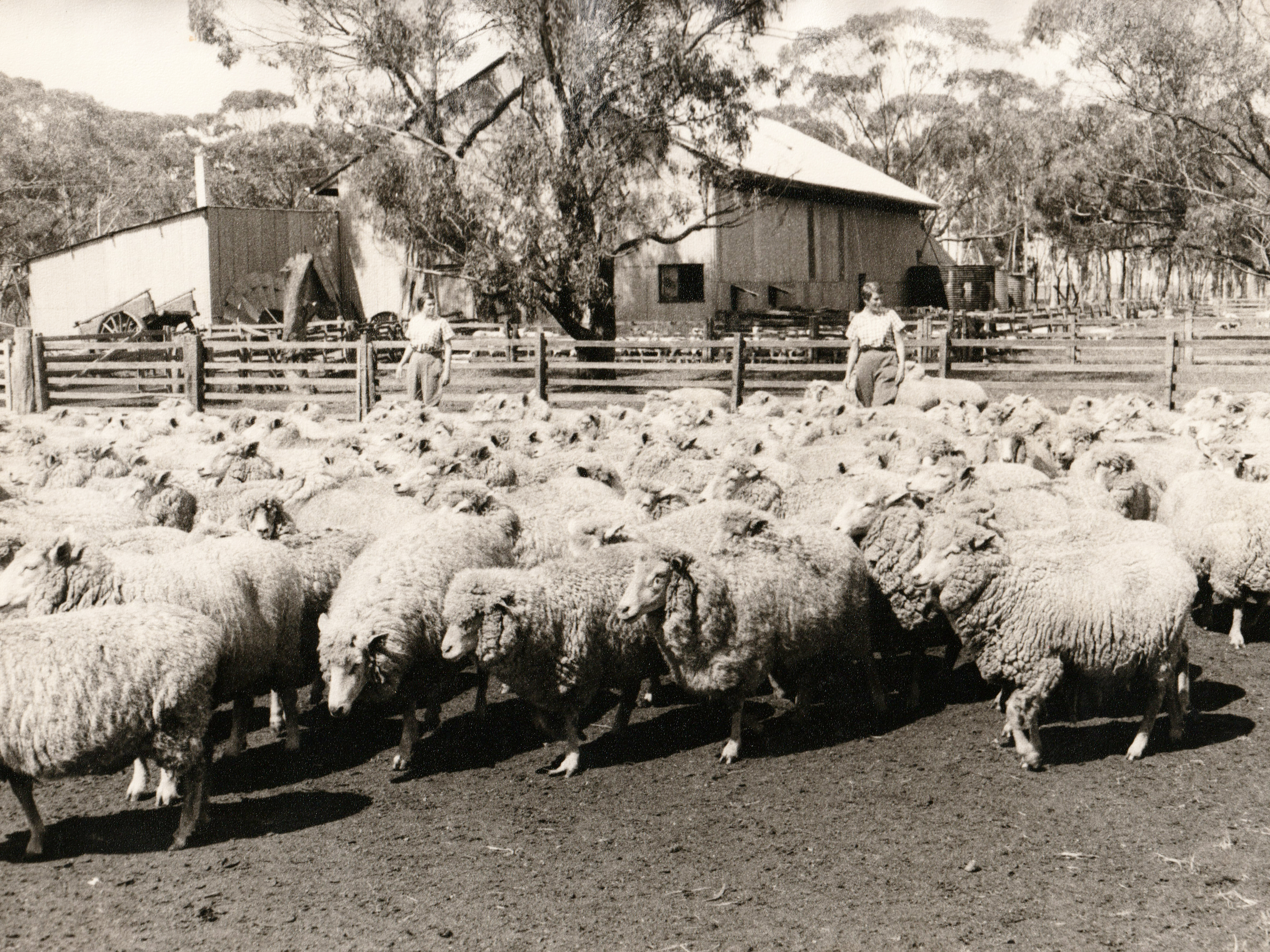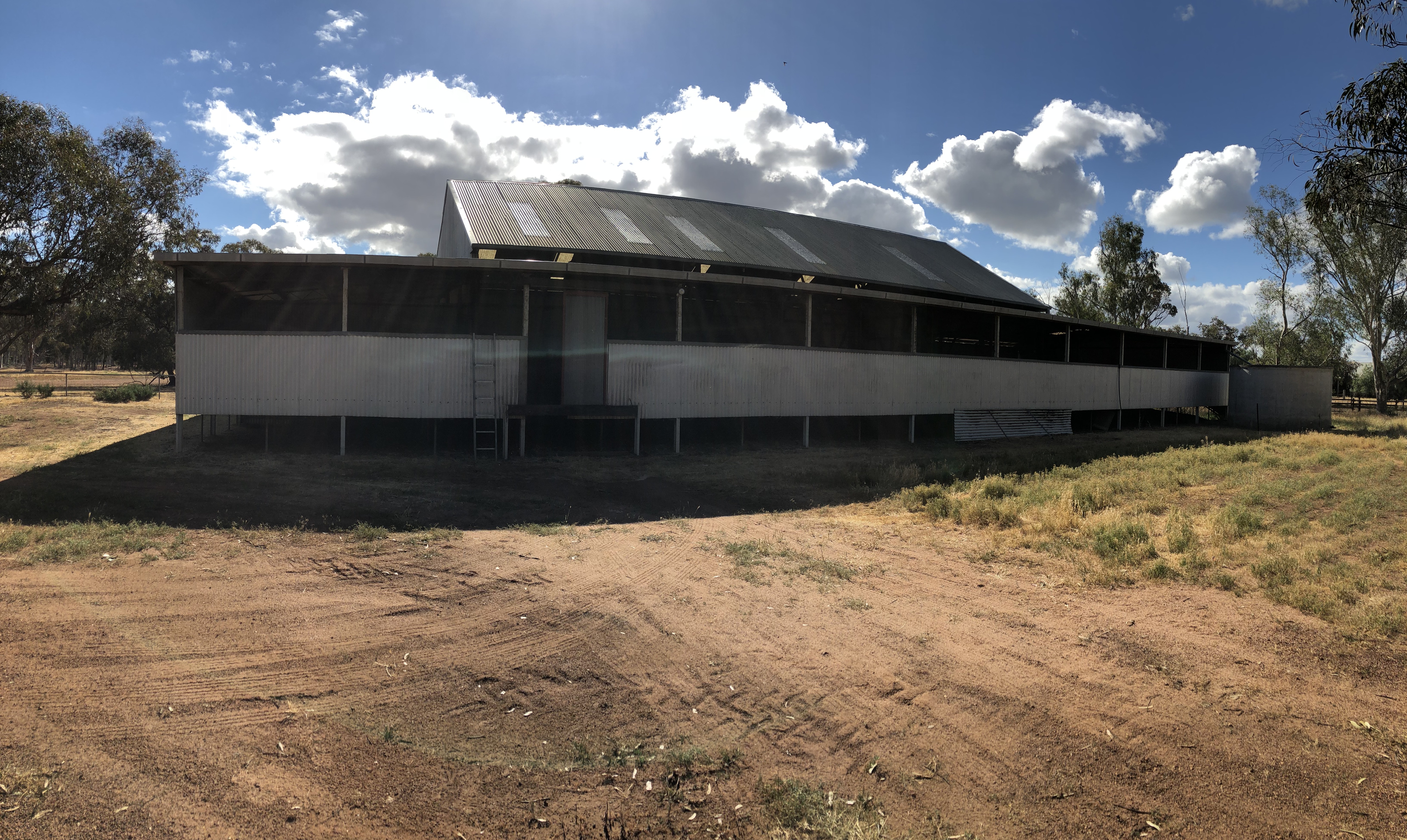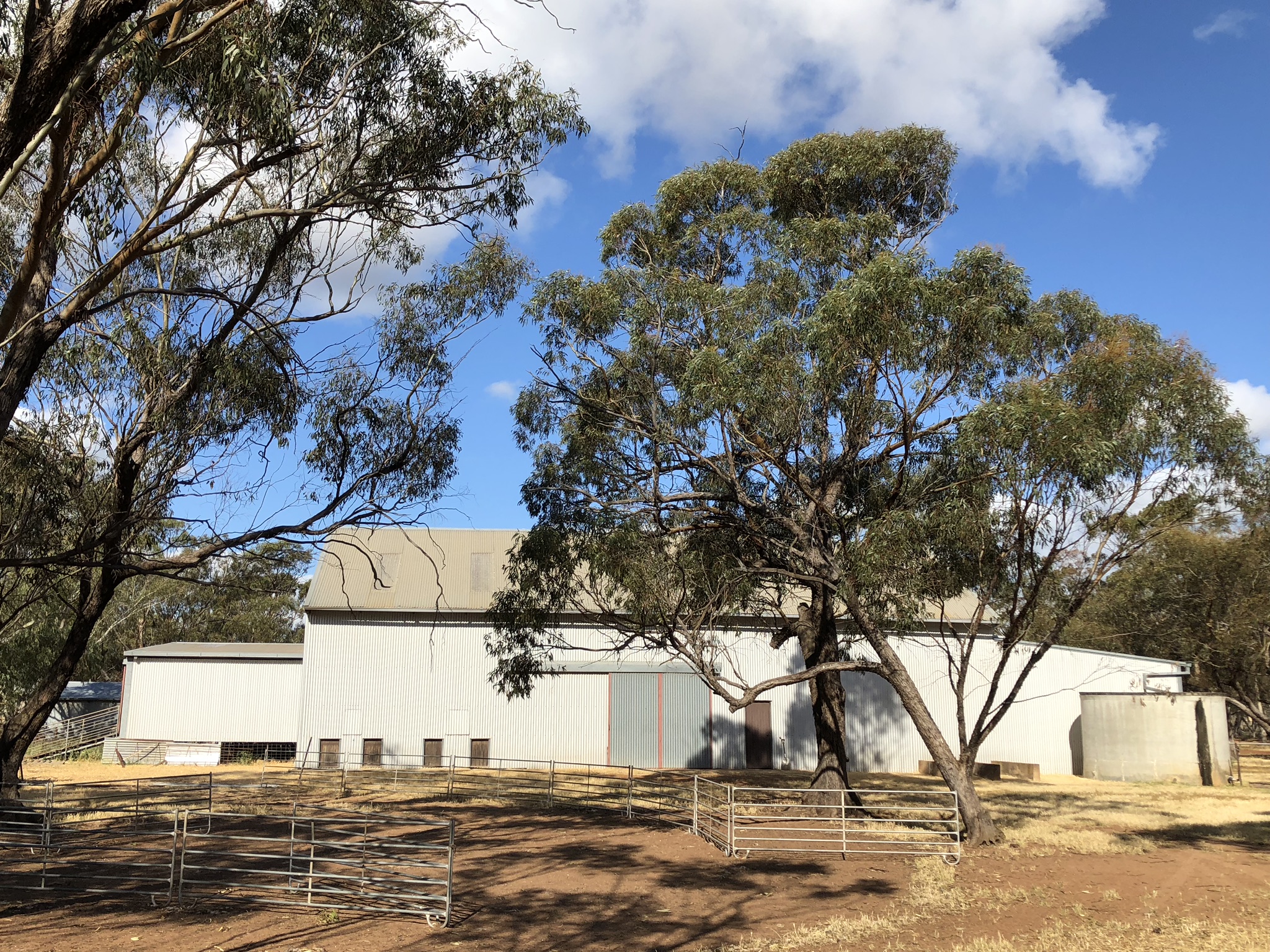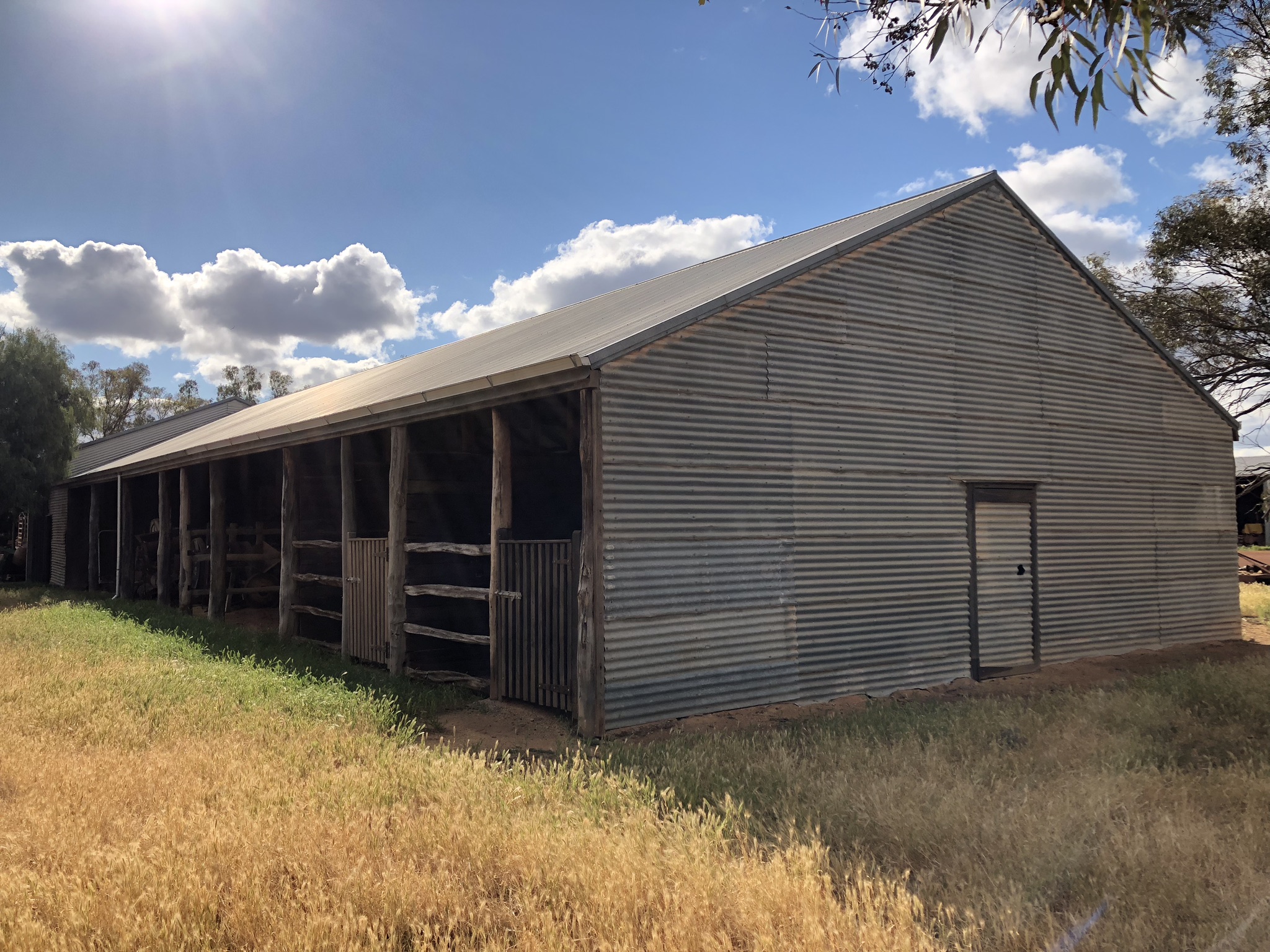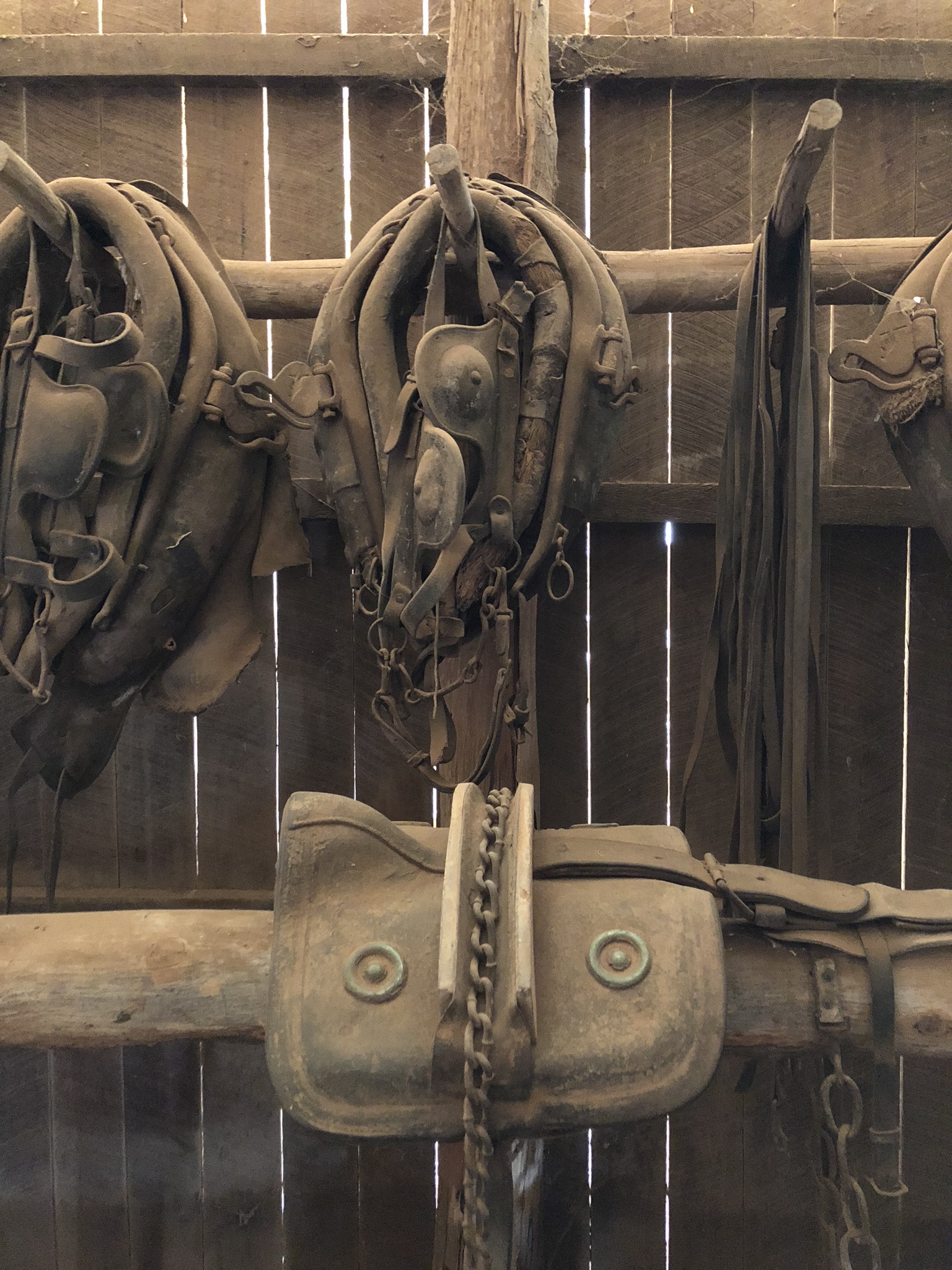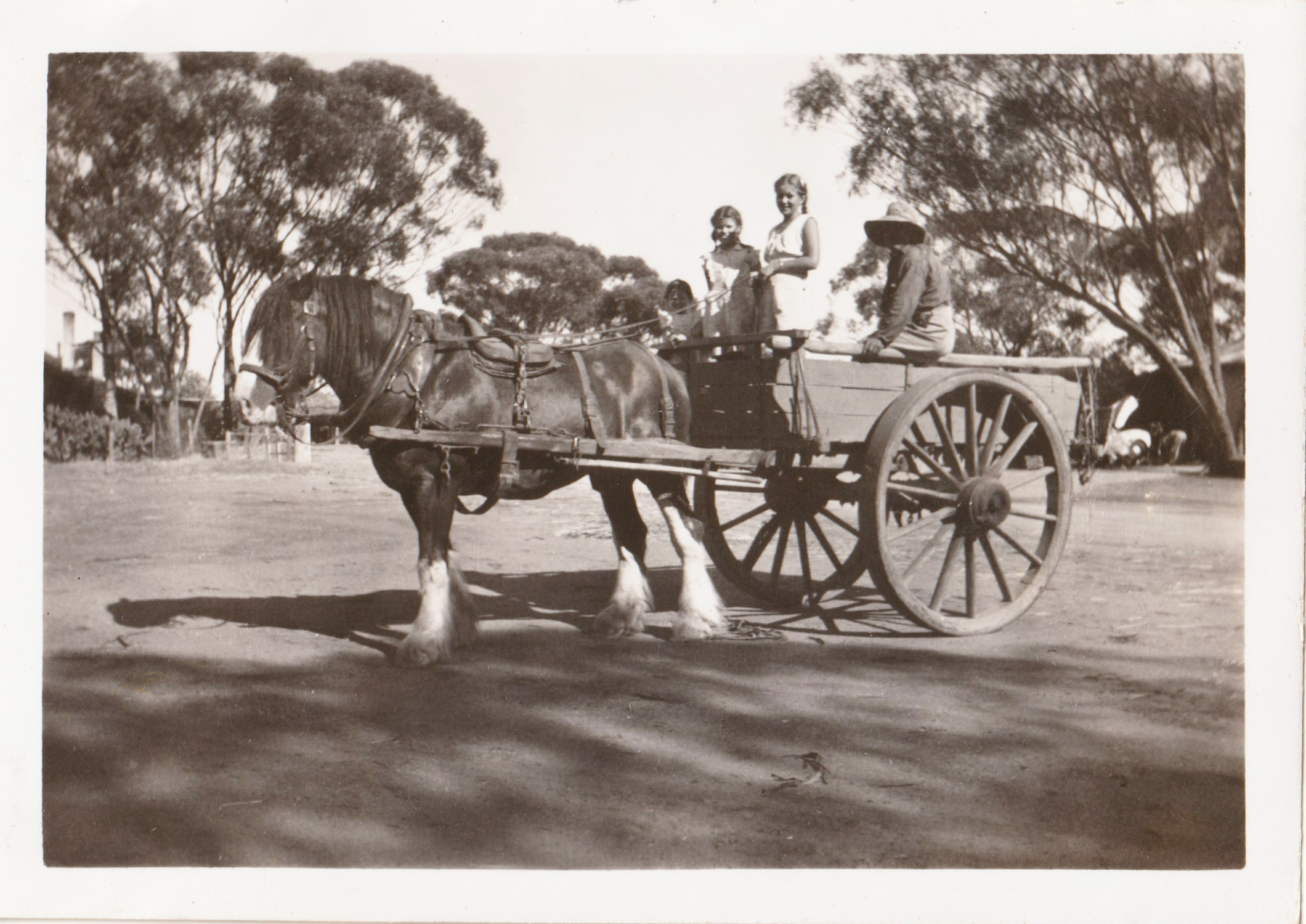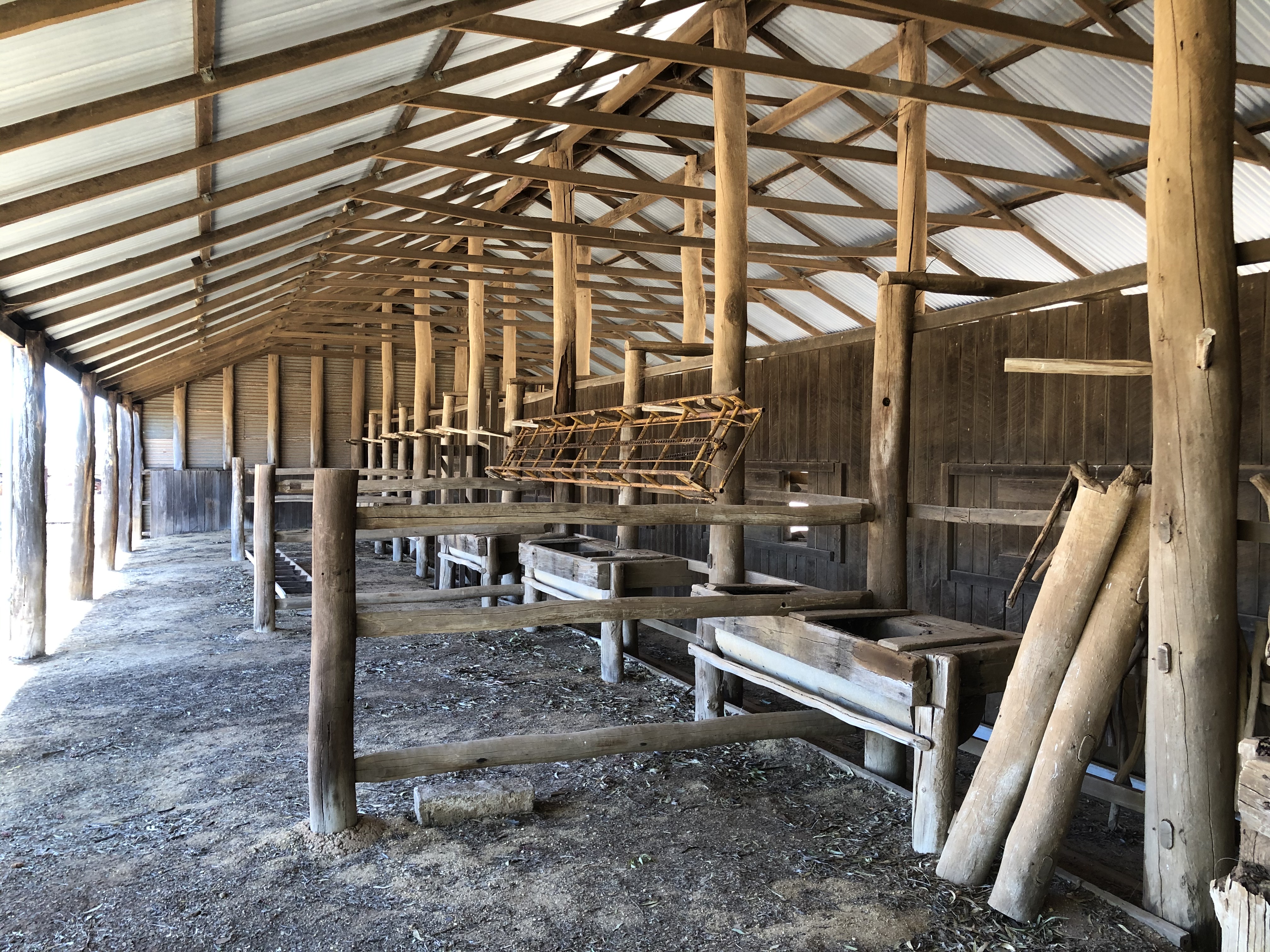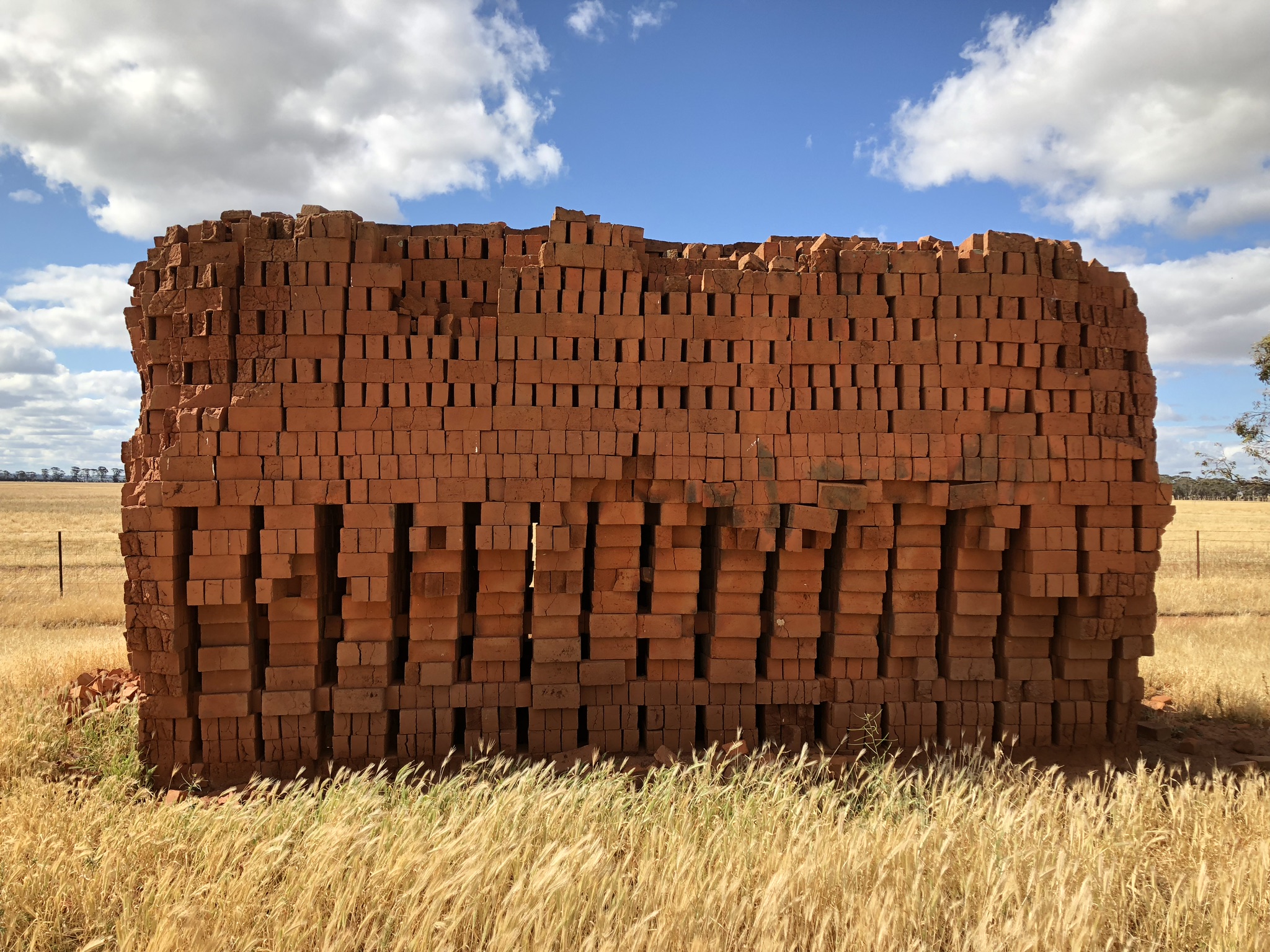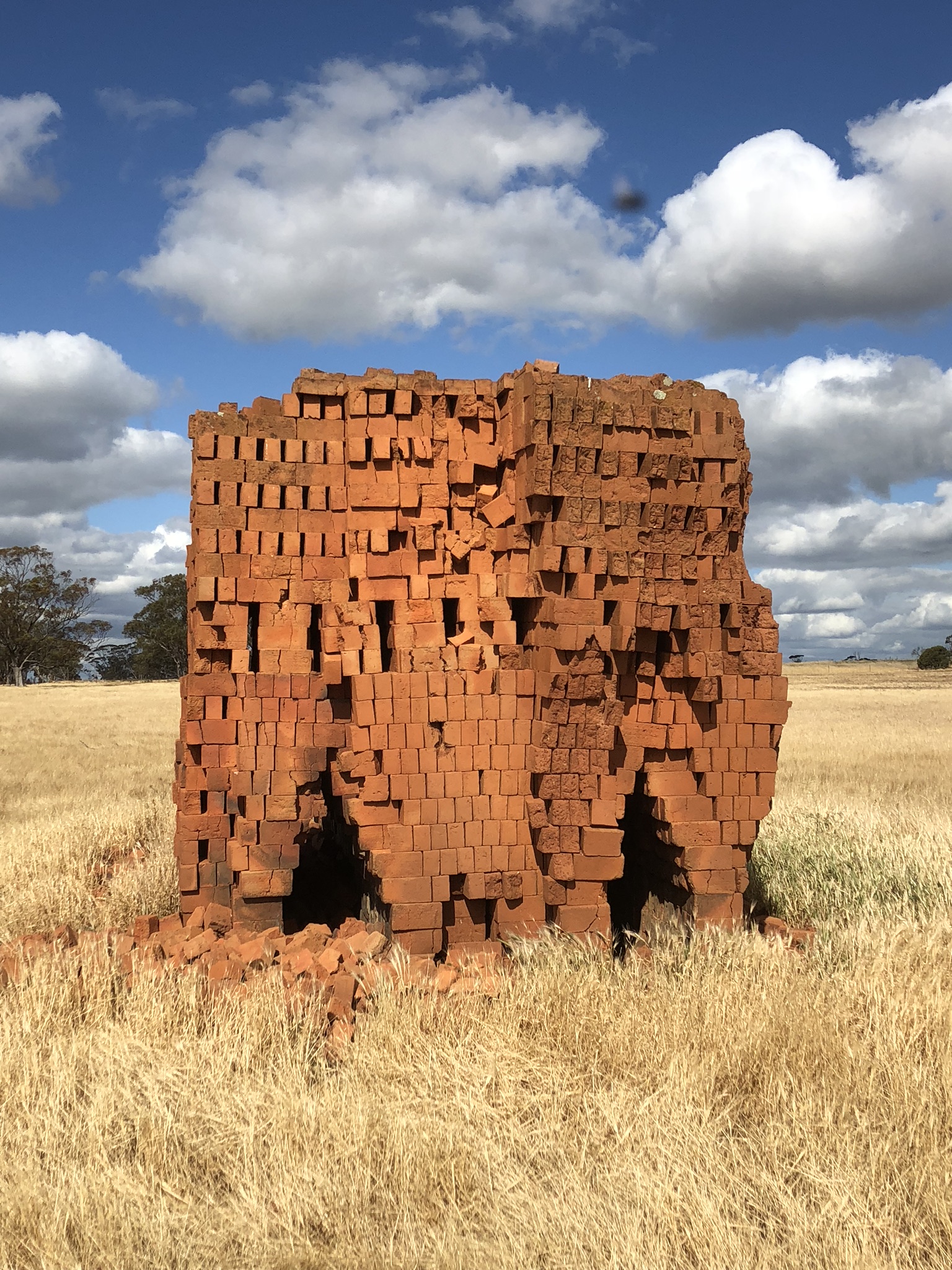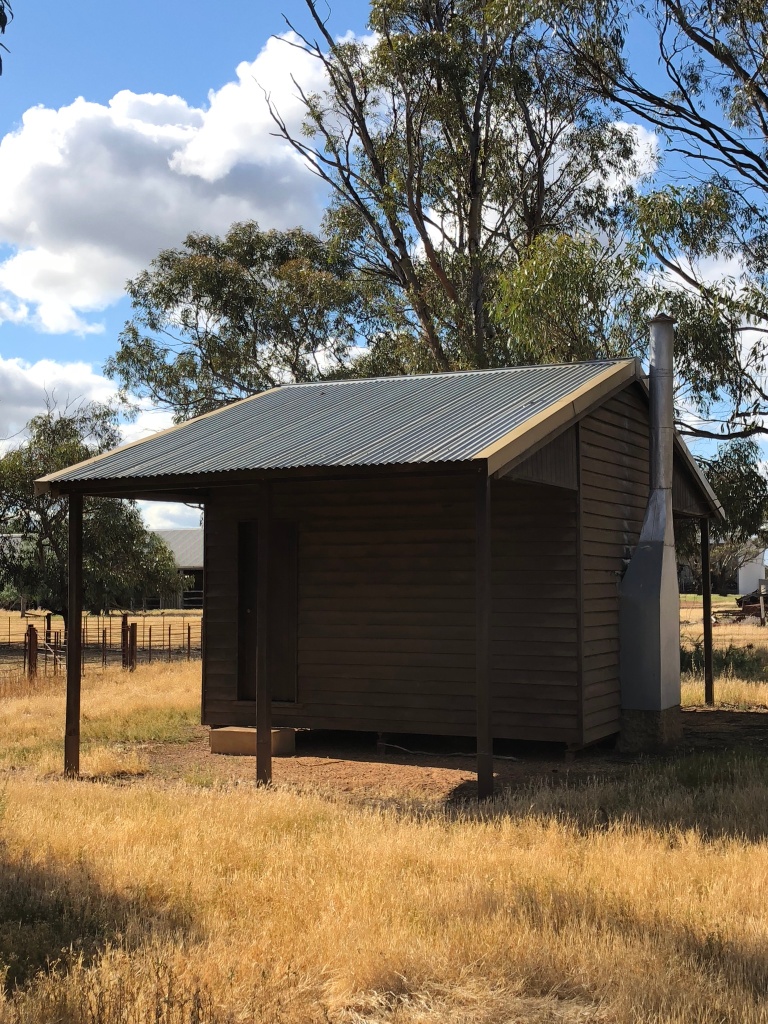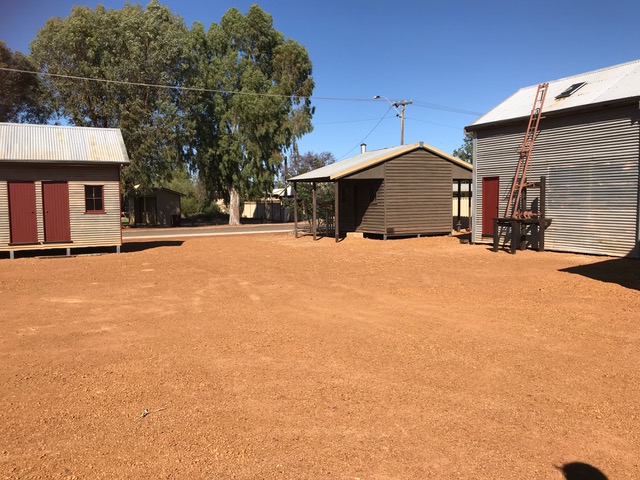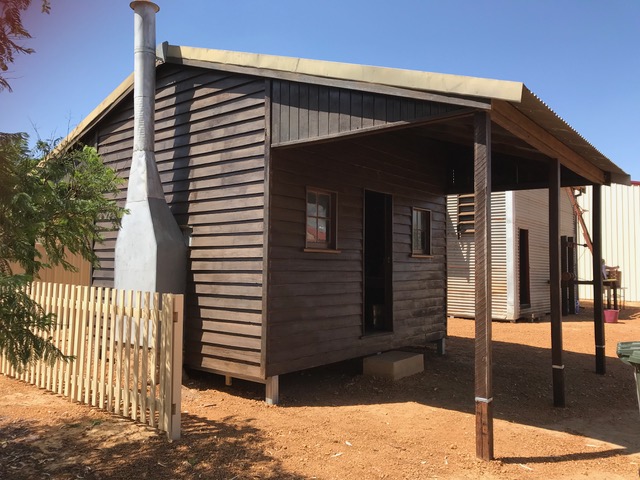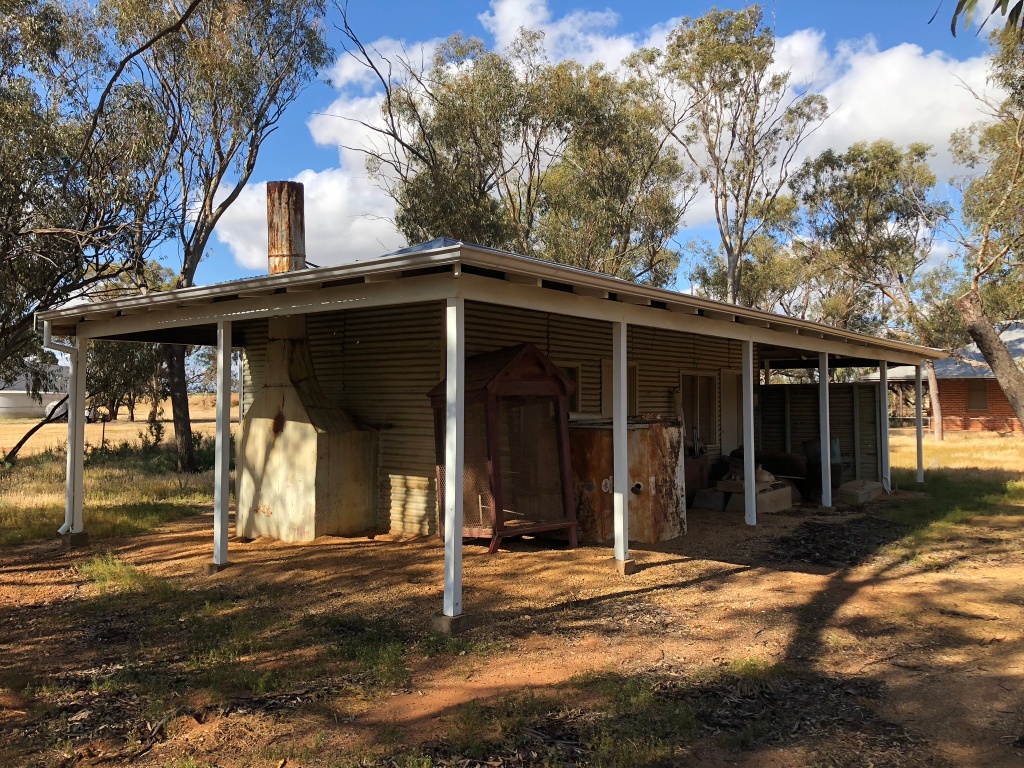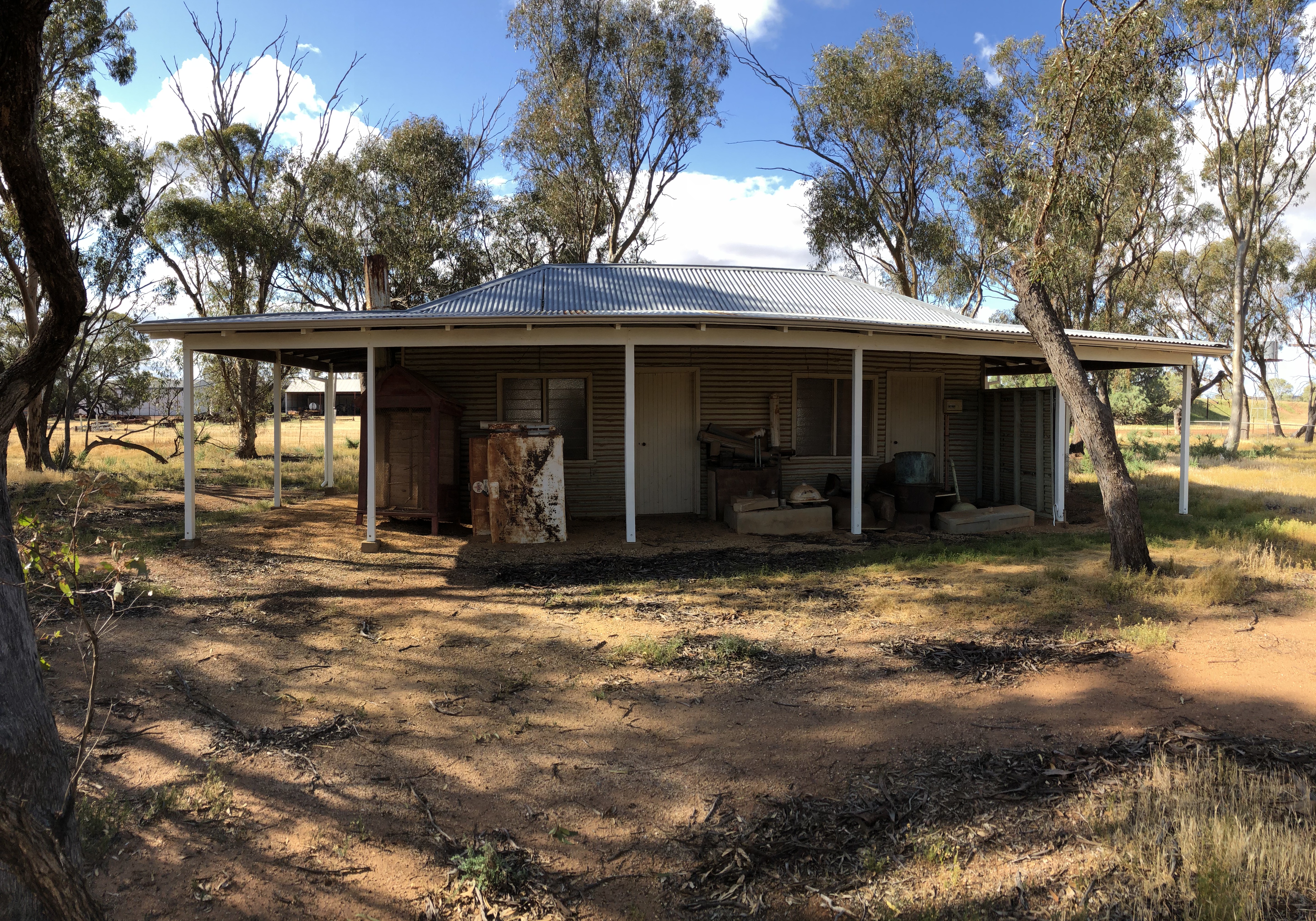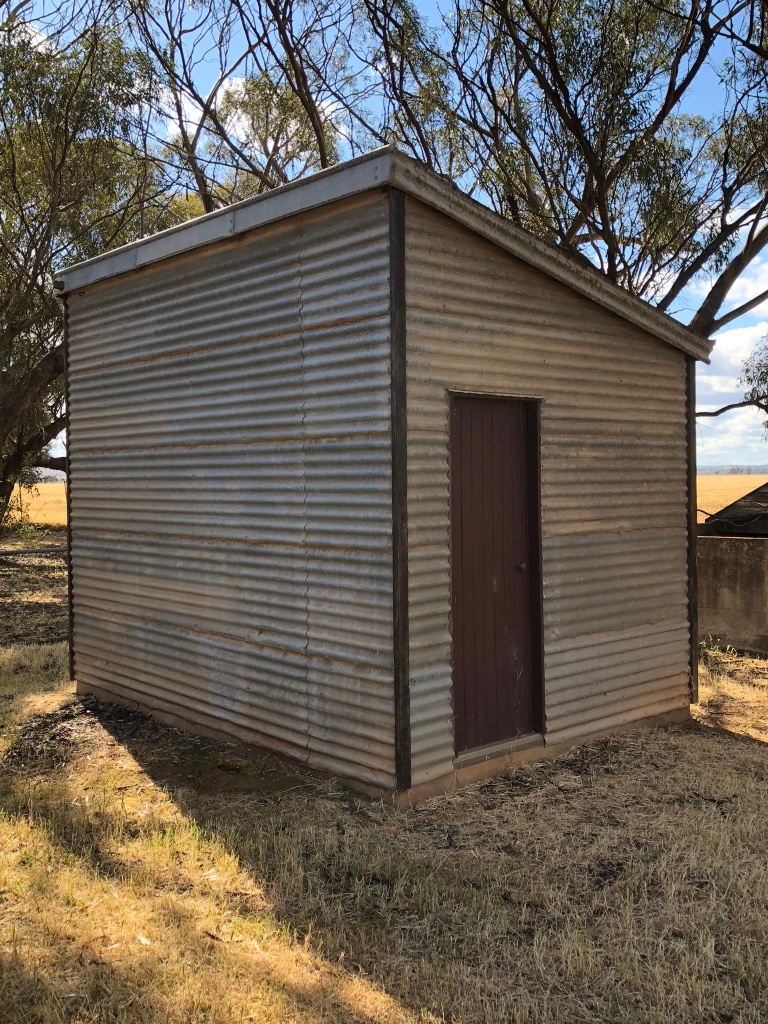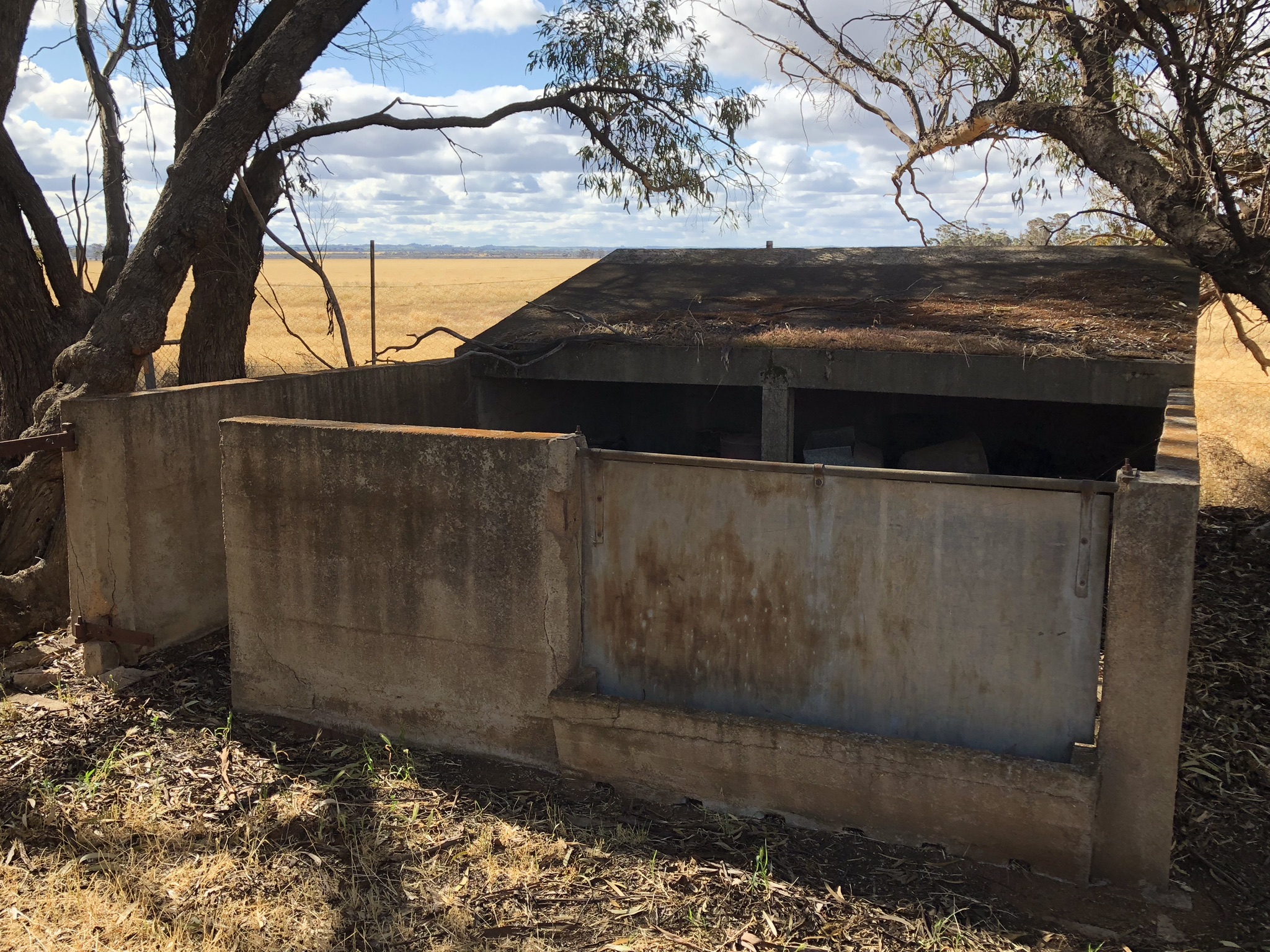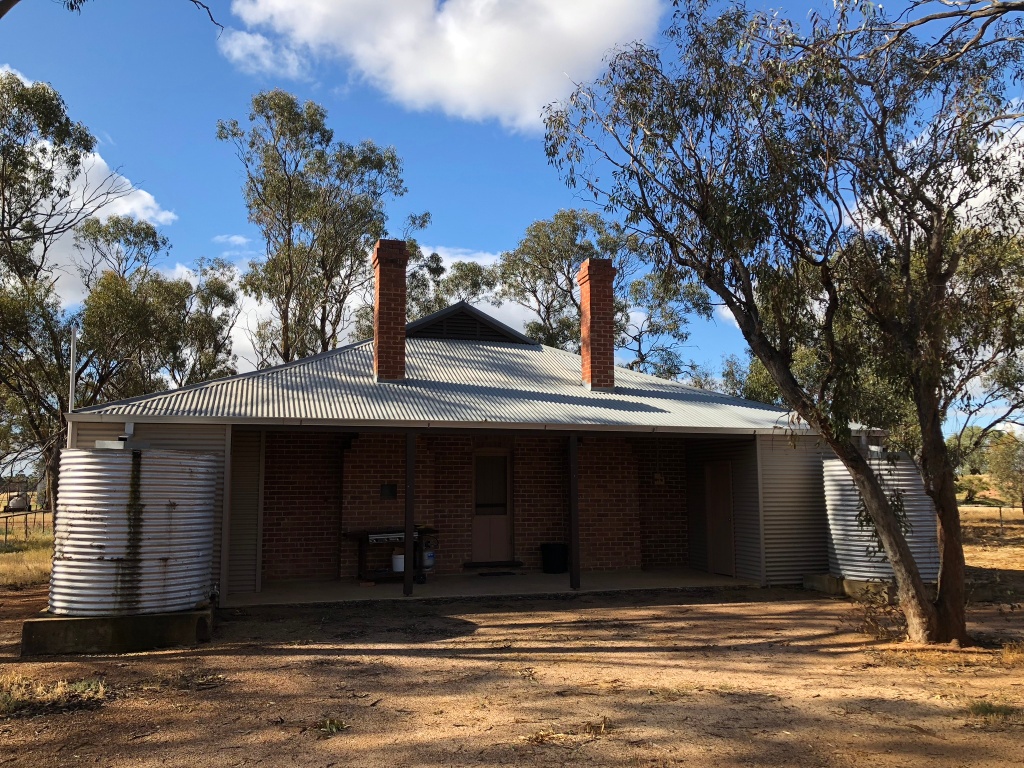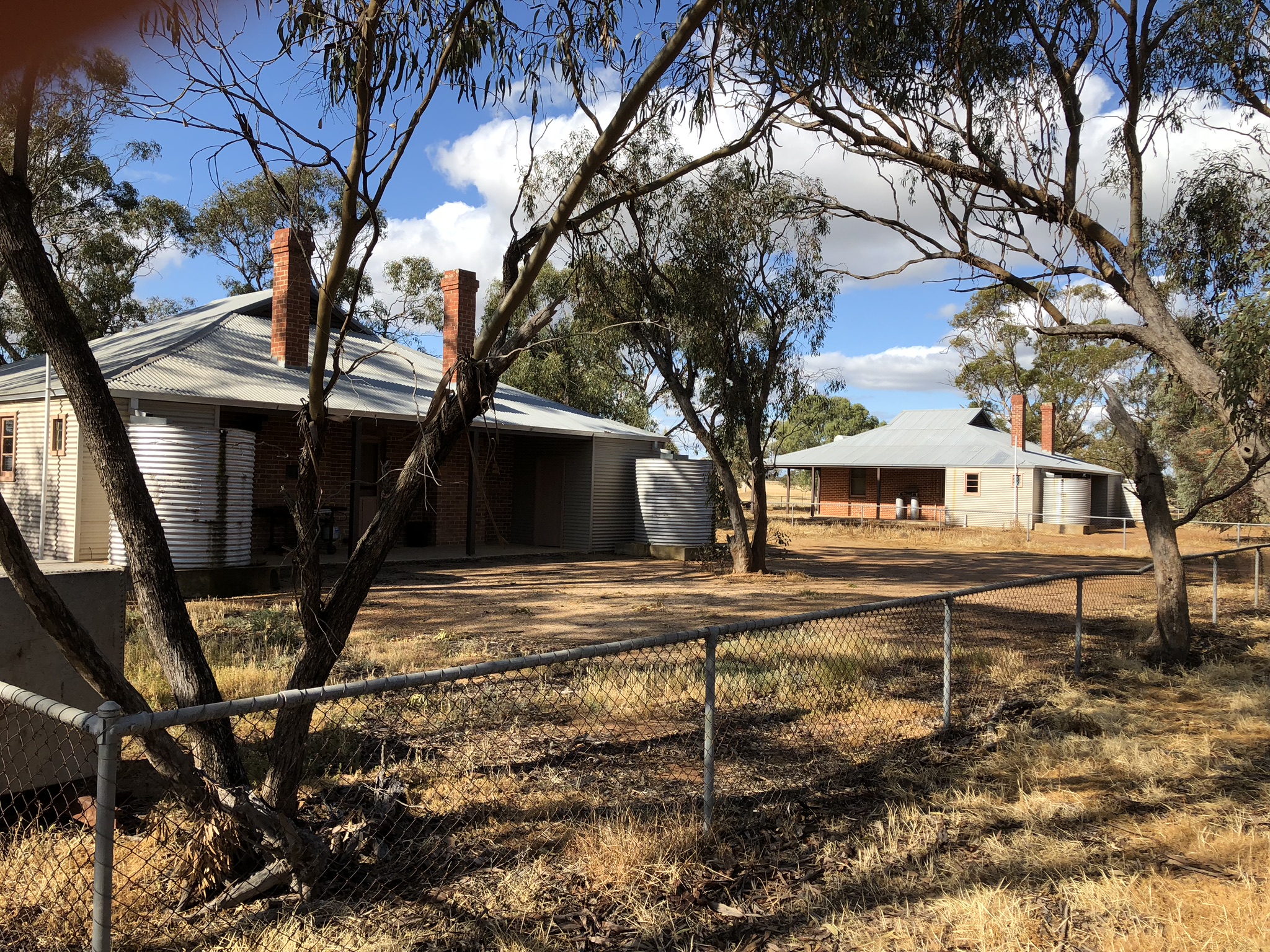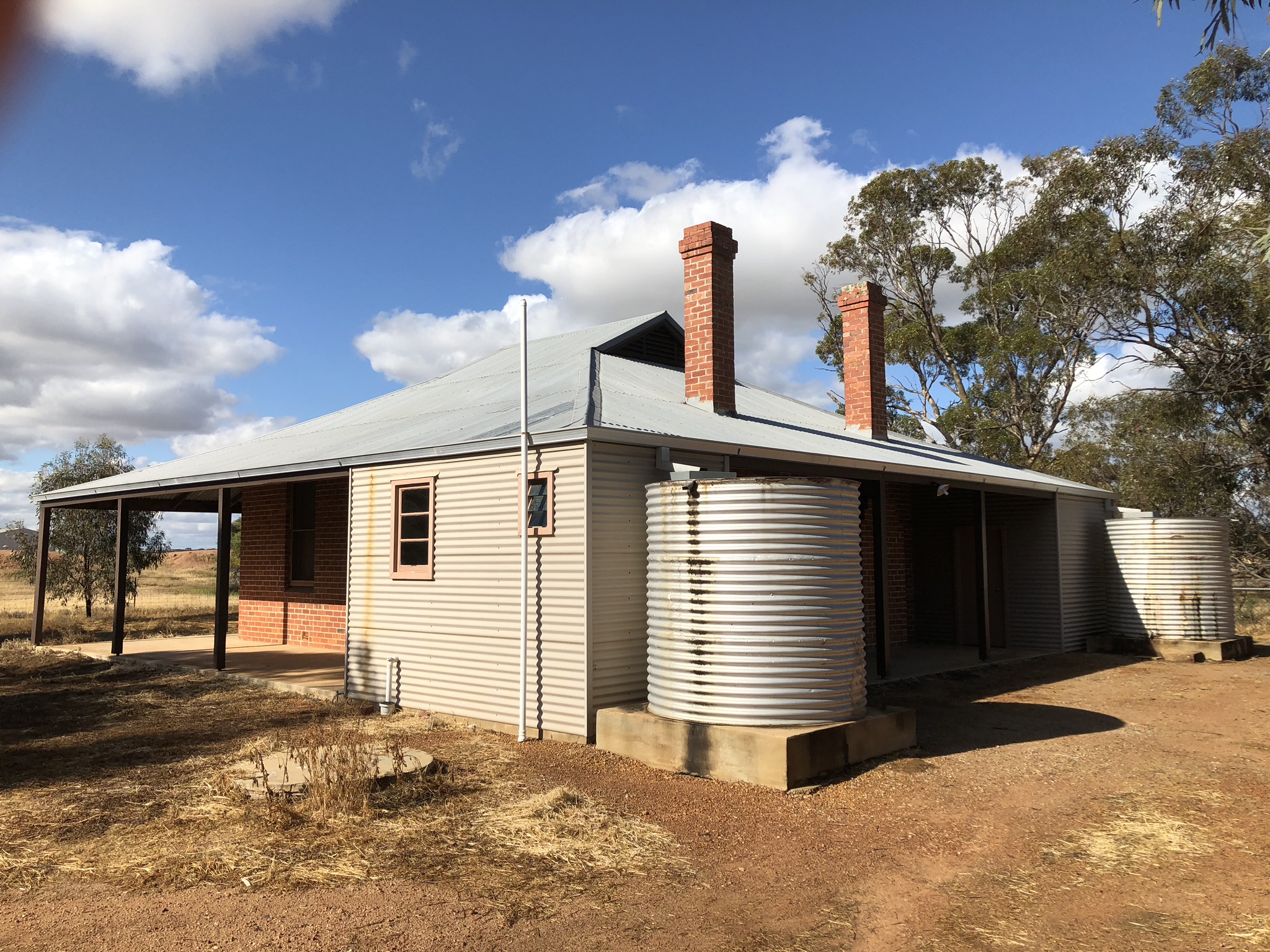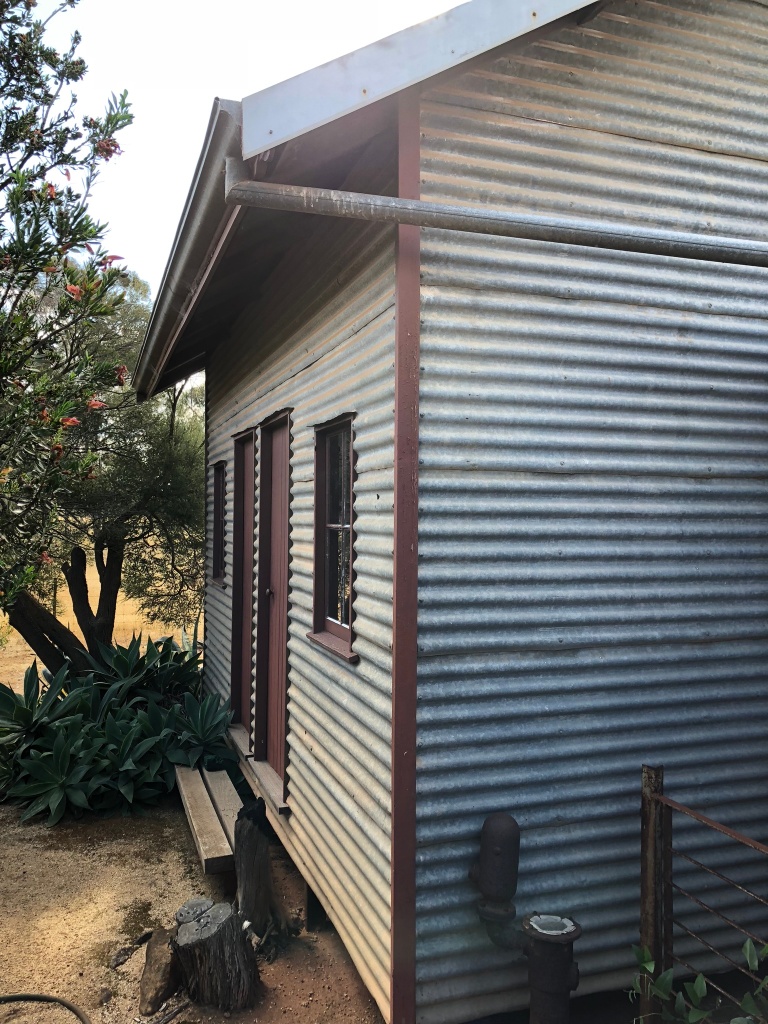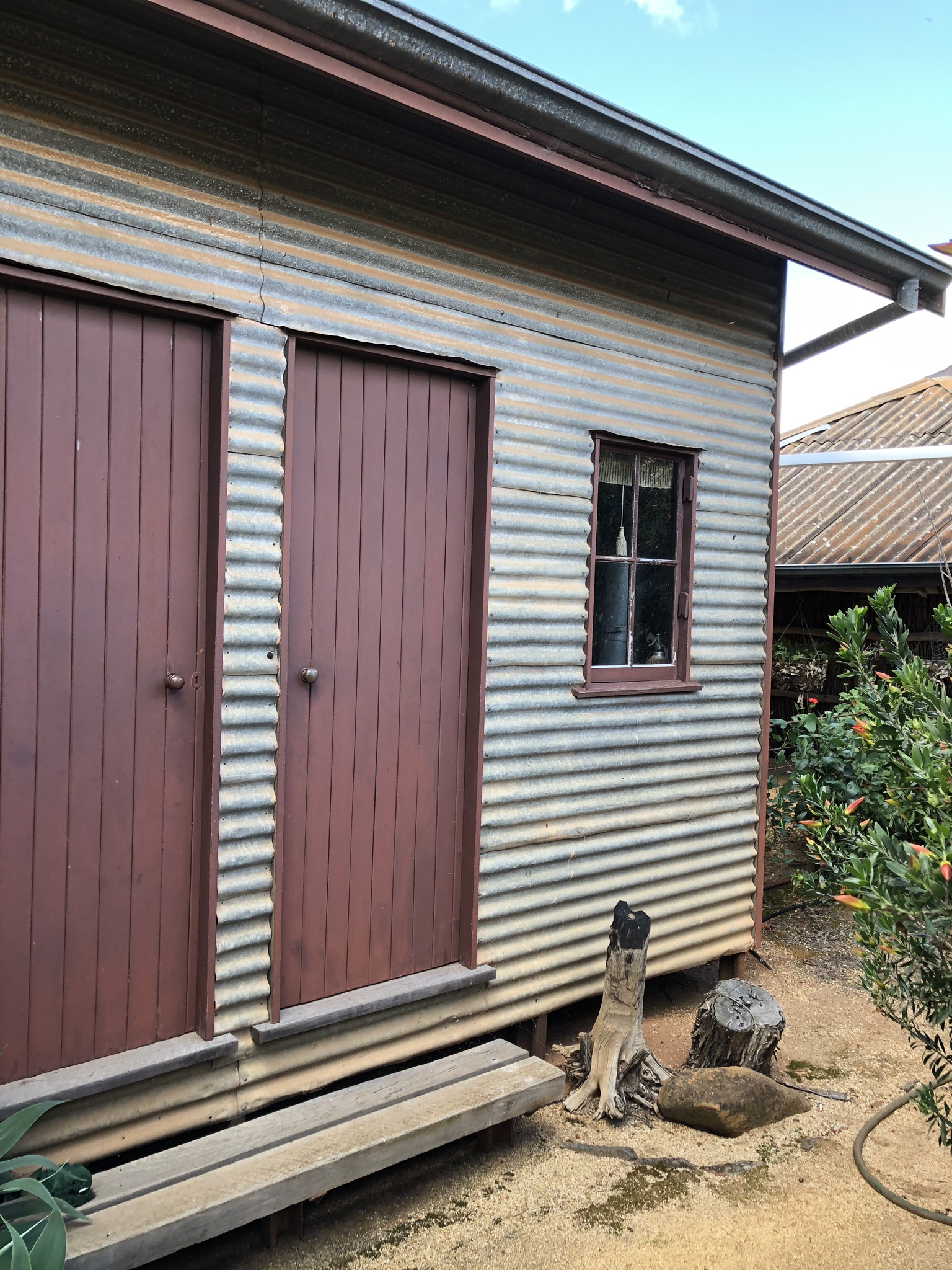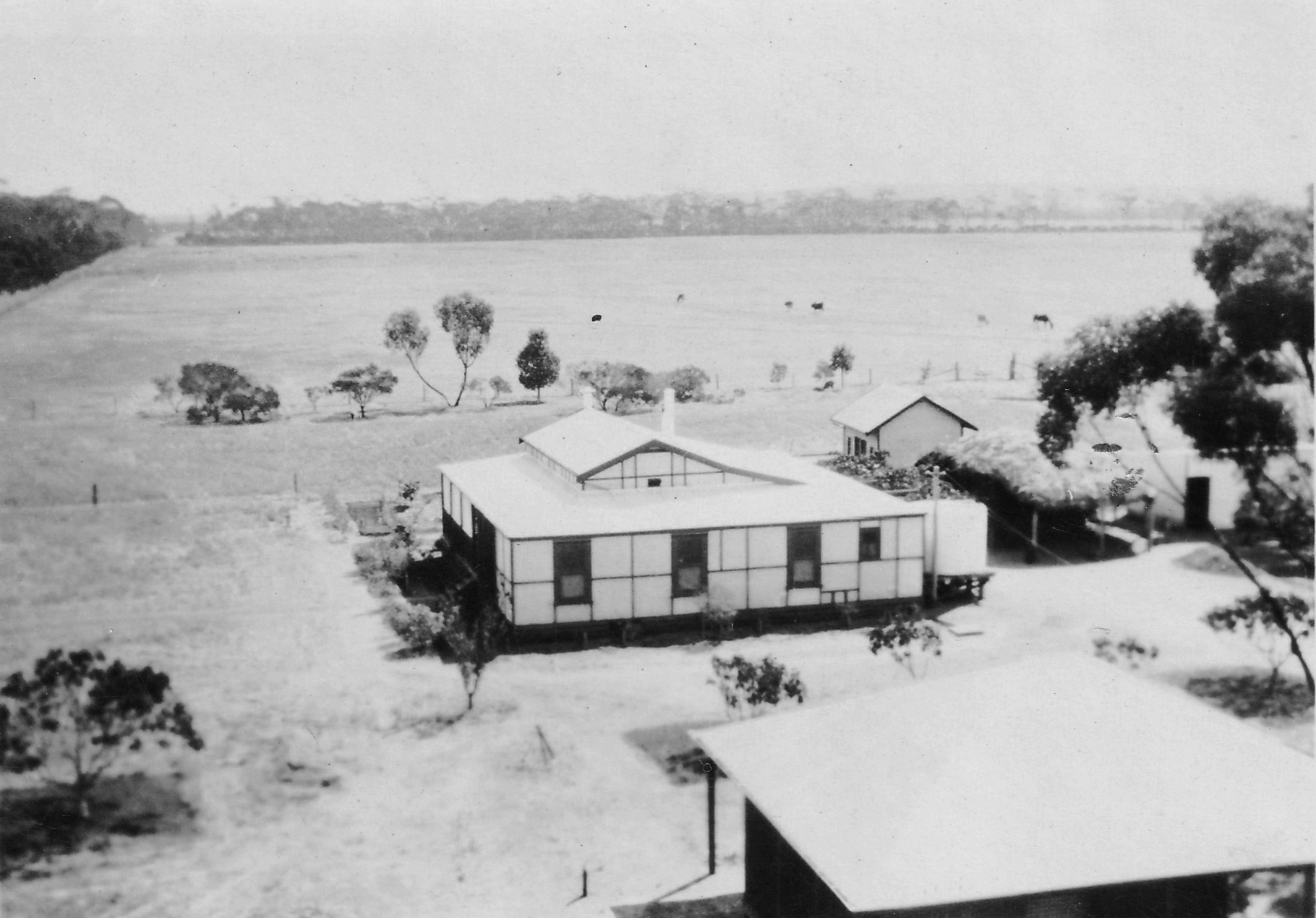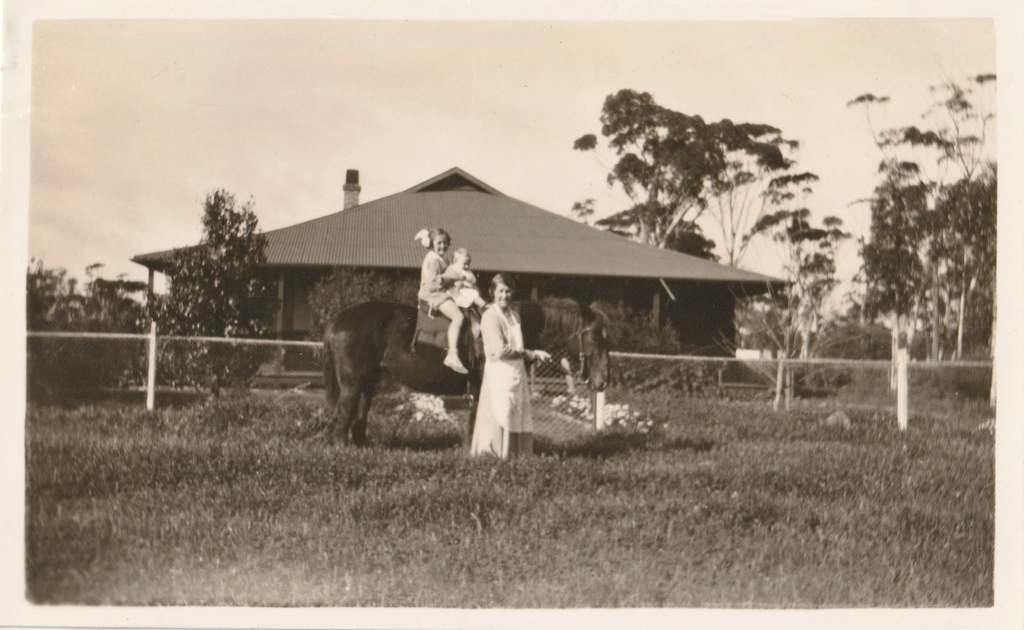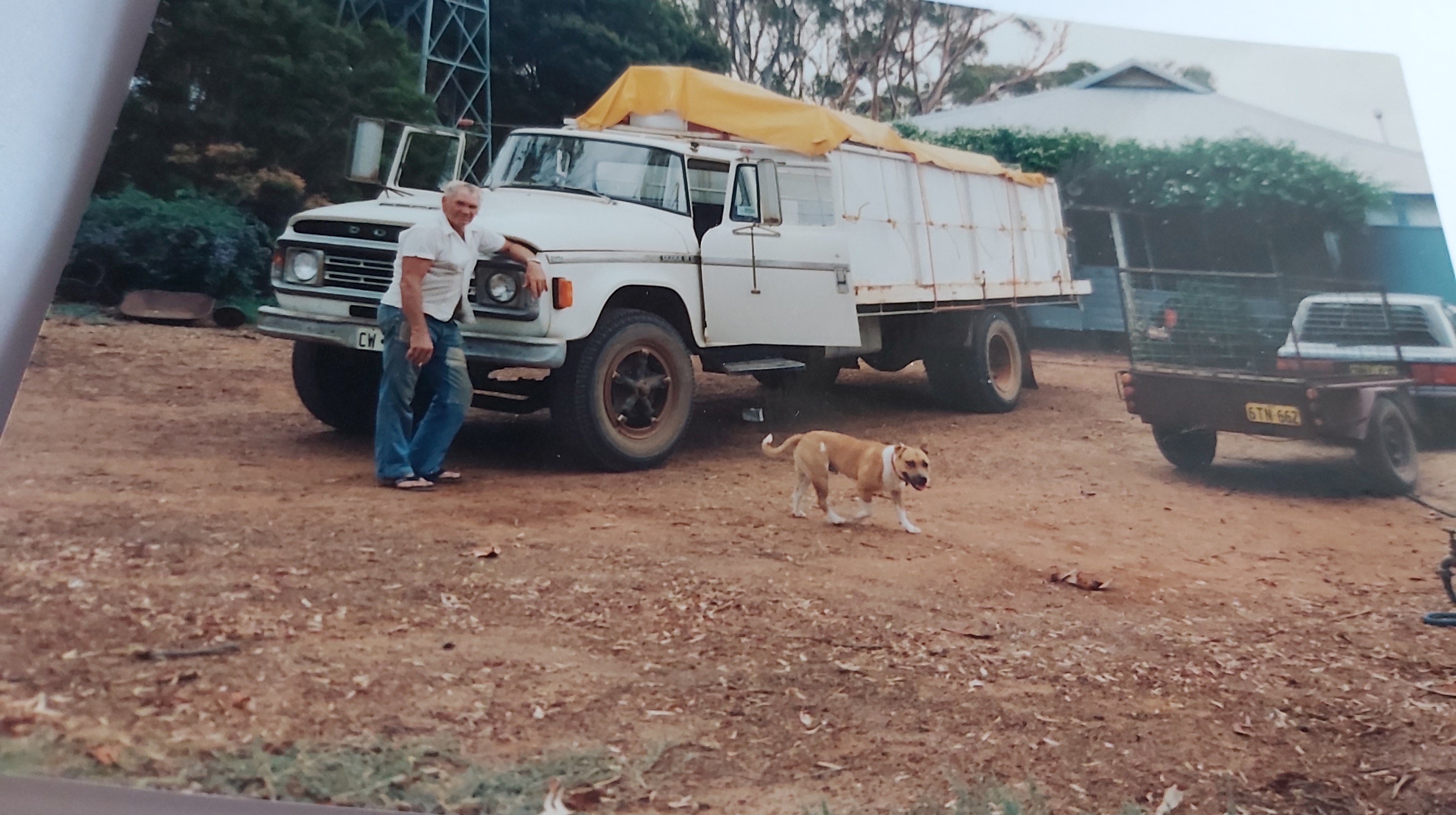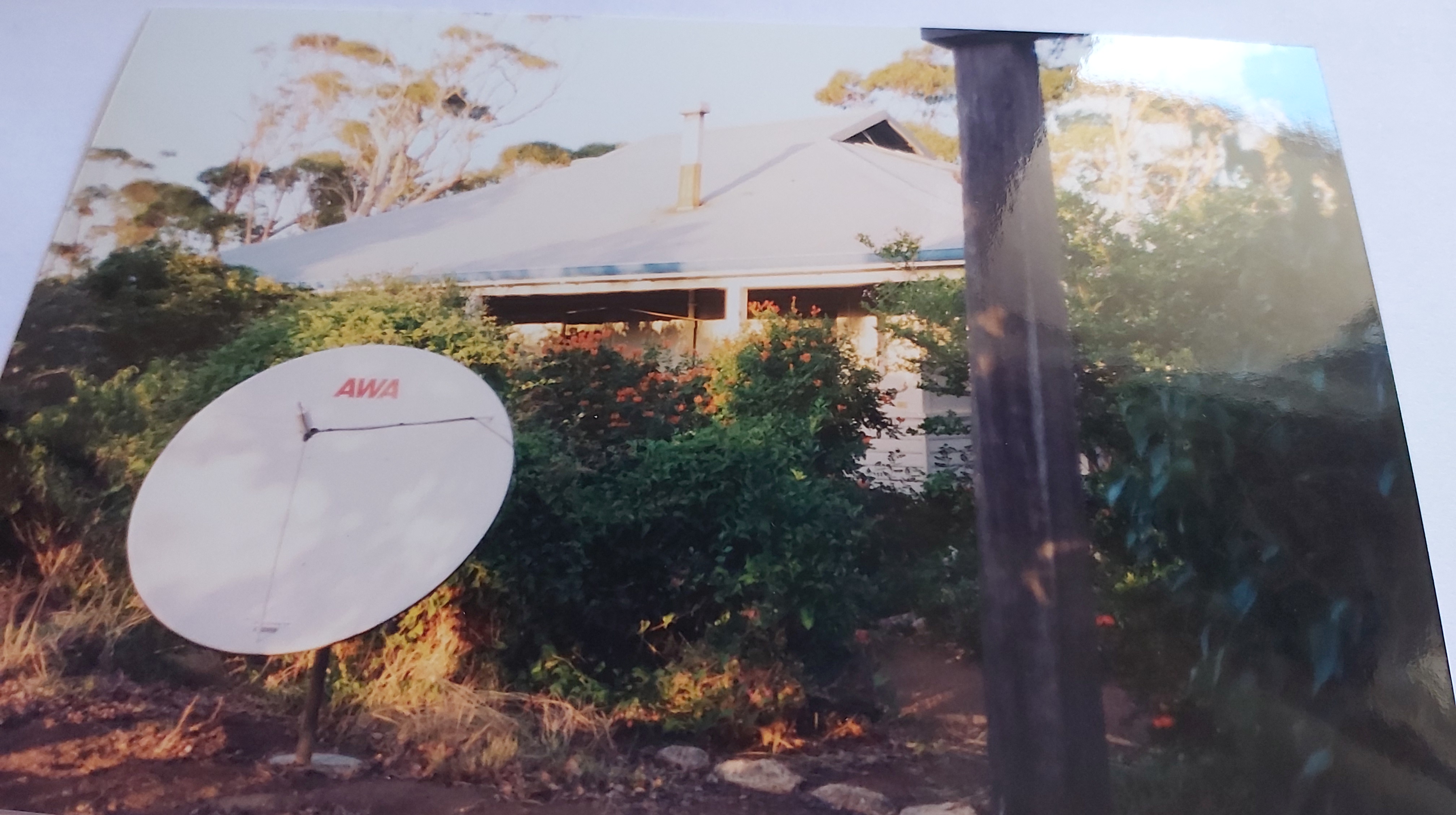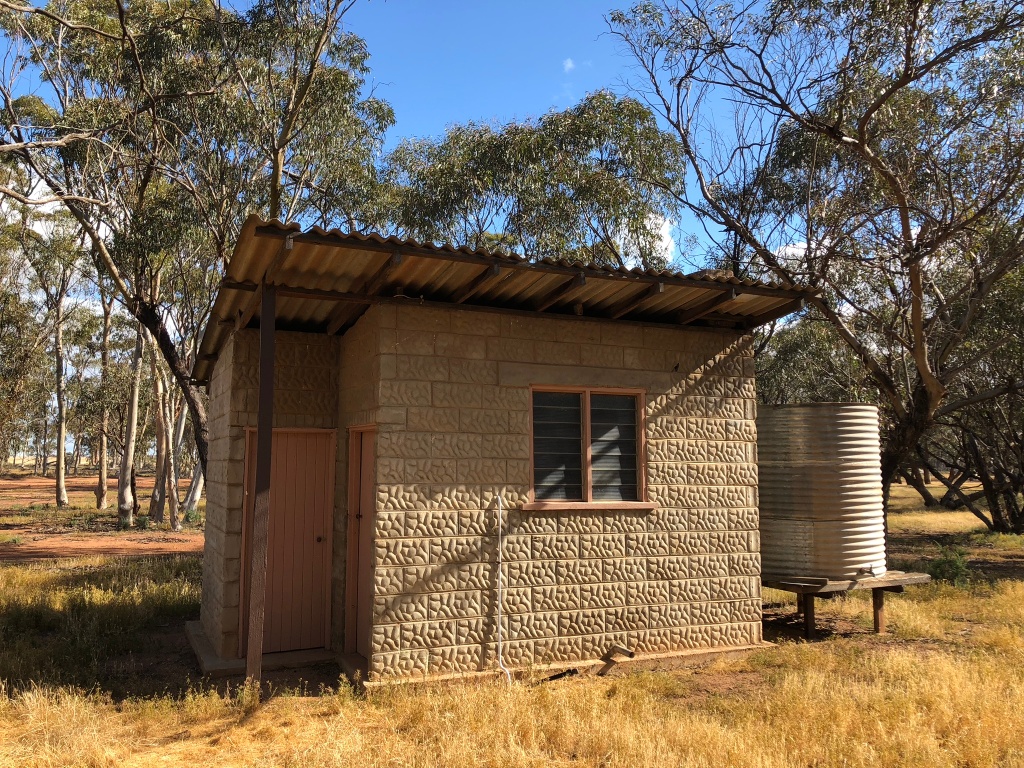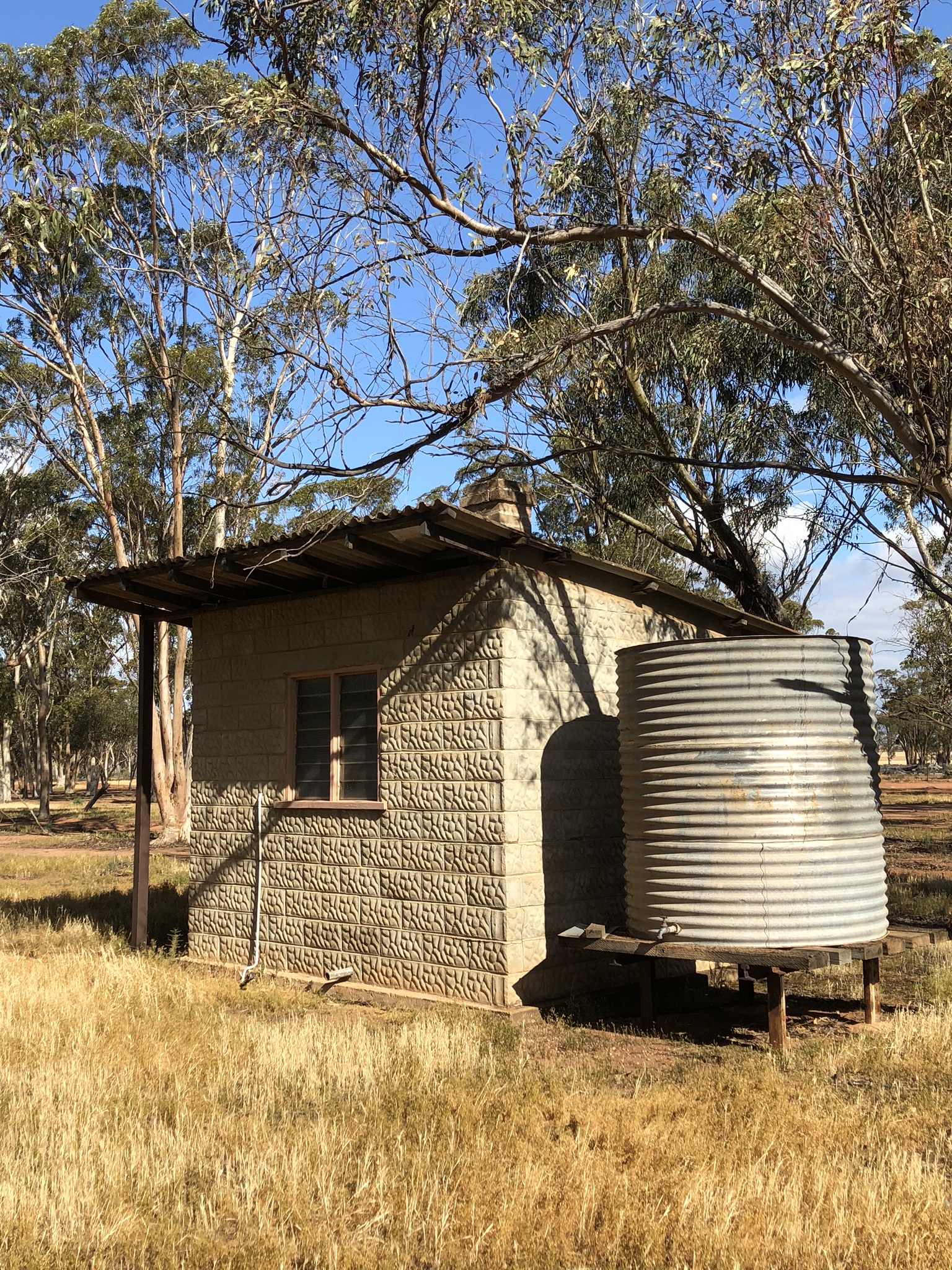Koobabbie Homestead (built 1935)
A large residence constructed of rendered concrete block with a tiled gable roof, the main homestead was designed by well-known Western Australian architect Marshall Clifton.
The main entry is to the south is enhanced with a flat roofed verandah supported on eight concrete pillars, and double entry doors. Chimneys are of unusual design with rendered band surrounding. Windows are double hung, timber framed with 12 small panes. A skillion roof to the south covers a sleepout area enclosed with fly wire and blinds. Internally, the rooms are large with high ceilings, some with decorative plasterwork, and all the internal woodwork is made of jarrah.
Oat Bin
An early example of bulk storage of grain. A small rectangular timber framed corrugated iron building with a timber floor. It held 500 bags – which were originally carried from the wagon up steep steps and emptied through a door near the roof. In the 1950’s a creek bag loader was installed on the east side, which avoided the necessity to carry bags up the steep steps.
**Now located on the Koobabbie Precinct in Coorow**
Shearing Shed (built 1912)
The Shearing Shed is a large rectangular corrugated iron shed with a corrugated iron gable roof. Internally, centrally placed bush poles with a mixture of timber and steel trusses support the roof. Three rows of magnificent salmon gum poles give the shed its height. The north end of the lean-to on the east side was originally fitted out as the blacksmith shop (removed in 1976)
Old Stables (built 1910)

This large rectangular building was constructed in 1910 and originally there were stalls for 12 horses. The uprights are salmon gums, carefully selected with a Y fork, to take the supports for the roof. The purlins are gimlet overlaid with ti tree brush. Ti tree also forms the walls where necessary using gimlet for rails. The roof was thatched with sheaves of cereal rye, grown especially for the purpose. It had to be cut green, before grain formed, to avoid attracting mice. The sheaves were laid in over lapping rows, the butt end to the top. Rabbit netting was fastened over the lower edge of the roof to hold it firm. In latter years the thatching was done approximately every three years by Mr Bill Johns Snr, assisted by two Koobabbie employees. The last thatching was done here in 1962.
In 1983 the thatched roof was replaced with a colorbond roof, which now protects the brush that was under the thatch. Badly needed repairs were undertaken at this time and the length of the stables reduced by a third. Internally, the space is divided into stables and a killing room in the southeast corner. This section has a concrete floor and brush walls.
Chas Olsen and William Mitchell built the original adjoining bull yard and cow yards with bush timber in 1914. These were replaced in the 1980s with yards built using railway iron purchased when the stockyards in Coorow and Winchester were demolished
The “New” Stables (built 1914)
The magnificent New stables originally consisted of hay shed, chaff house, and stables. Construction was of large salmon gum poles, dressed timber, and galvanised iron. Corrugated iron was used for the roof of the building and for the walls of the hay shed and chaff room. Salmon gums and gimlets were used as post and rail fences for the yards around the stables. It was designed with a partition down the middle to stop the wind whistling through and central feeding aisle, with wooden tracks, allowed a trolley to be pushed along to deliver feed to each manager via a sliding access window. The tracks are still in place.
In February 1969, a severe local storm tore the end off the hay shed, so in 1971 the hay shed and chaff house were dismantled, and replaced by a large steel frame workshop, which opens into the stables.
The Brick Kiln (built 1935)
When the house was planned it was decided to make the bricks out of clay from a paddock nearby. The clay was mixed with water and then pressed firmly into wooden moulds. The bricks were then turned out and dried in the sun. When they were dry they were stacked in such a way that smoke and heat could reach all the bricks. The stack was wider at the bottom with two spaces running the length of the stack in which the firewood was put. The sides and top of the stack were covered with layers of soil and clay to keep the heat in and the ends were left partially open. The wood was set on fire and more wood was put in to keep the temperature high and bake the bricks for about three days. Then the stack was left to cool. The bricks were then ready to use.
However the builders, for some reason, decided the bricks were not suitable and used cement instead. This brick stack still remains in a paddock. It is considered that this brick stack is historically interesting as it is one of the only surviving brick stacks that demonstrates how bricks were made at this time.
Leo’s Camp (built circa 1925)
This is a single room constructed of a timber frame with weatherboard cladding. A gable corrugated iron roof extends to form verandahs, north and south. There is an attached metal fireplace and chimney to the east. There are entrance doors to the north and south elevations, with two small timber framed four paned windows each side of the entry doors. The building is named for stockman Leo Allen who occupied the building from1947 until his death in 1961. He was also given a 32 volt electric light, the only employee with that luxury.
It now set on railway iron stumps to protect it from termites.
**Now located on the Koobabbie Precinct in Coorow**
The Shearers’ Quarters (built 1925)
A small rectangular shaped timber framed building with corrugated iron cladding and roof. The roof spreads to cover the surrounding verandahs, which are supported on timber posts. Windows are timber framed with louvres and there is an attached metal fireplace and chimney to the west elevation. The shearers quarters are now used for storage and were renovated in the 1980s.
The Engine Shed (built 1925)
A small rectangular corrugated iron building. In 1925 a 32-volt Lister lighting plant was installed here for the main house and stables. This lighting plant was replaced in 1959 and mains power was connected to the farm in the 1970’s.
Behind this there is a small piggery with a concrete floor and animal shelter, apparently never used.
Married couples cottages (built 1925)
Two identical, two bedroomed brick dwellings with a corrugated iron roof were built. Each building has two corbelled brick chimneys and the dutch gable roof with gablets, spreads to cover the surrounding verandahs. The verandas are supported on timber posts and the southeast and southwest corners have been enclosed with colorbond for the bathroom, toilet and laundry. Entry is via french doors, with decorative brickwork surrounds to the doorway and the main entrance is a single central door on the back verandah. Both houses are surrounded by a metal post and wire fence.
Both houses were renovated in 1985.
Arnold’s Camp (built 1924)
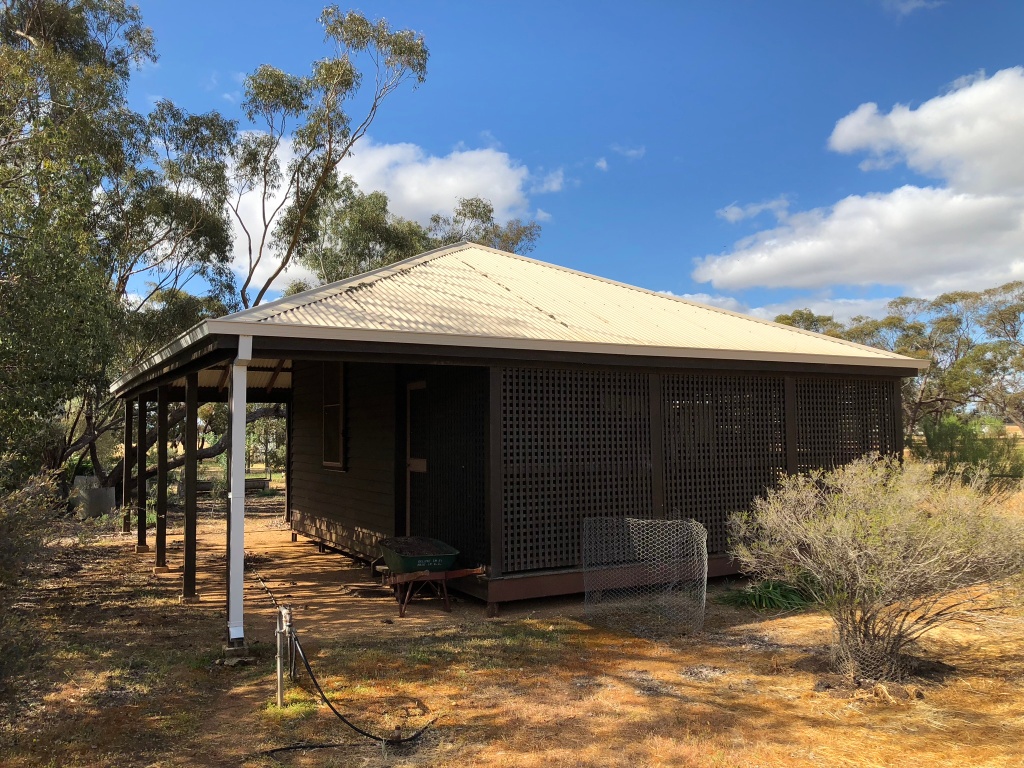
A small one-bedroom dwelling constructed of timber frame, clad with weatherboard and has a corrugated iron roof. The building is surrounded by verandahs which are supported on timber posts. The main verandah that the bedroom opens from is enclosed with lattice and has a wooden floor. Internally timber match boarding is used as lining to half height.
Built for Arnold when he returned from Roseworthy Agricultural College as the original house was small. Arnold moved in June 1924.
The Garage (built 1924)
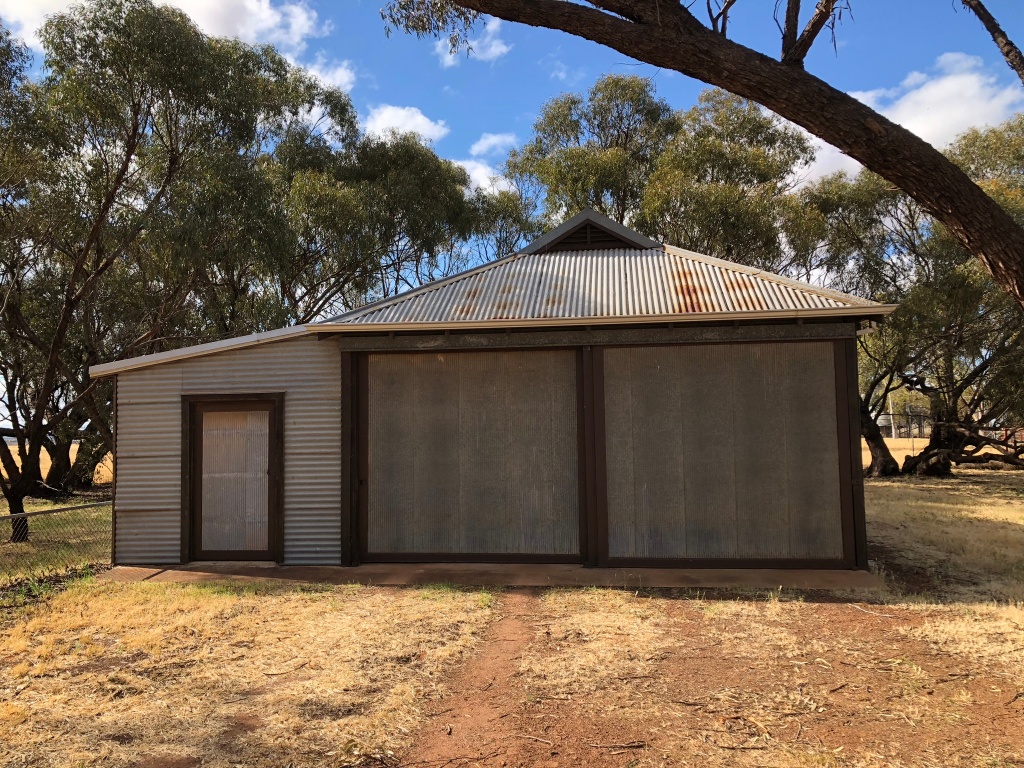
This is a timber framed corrugated iron clad building with a corrugated iron dutch gable roof. Rolling ripple iron clad doors open to the south. The original bituminous based product floor (colas) was replaced with concrete in the 1980’s.
There is a lean-to to the west elevation called the ‘Buggy Shed’ and it was originally used for this purpose but is now just storage. It was open on the south side and had an earth floor. In the 1980s the south wall was constructed with a door made of recycled ripple iron and the floor concreted. The shelves are timber from the original Koobabbie house.
Bough Shed (built circa 1914)
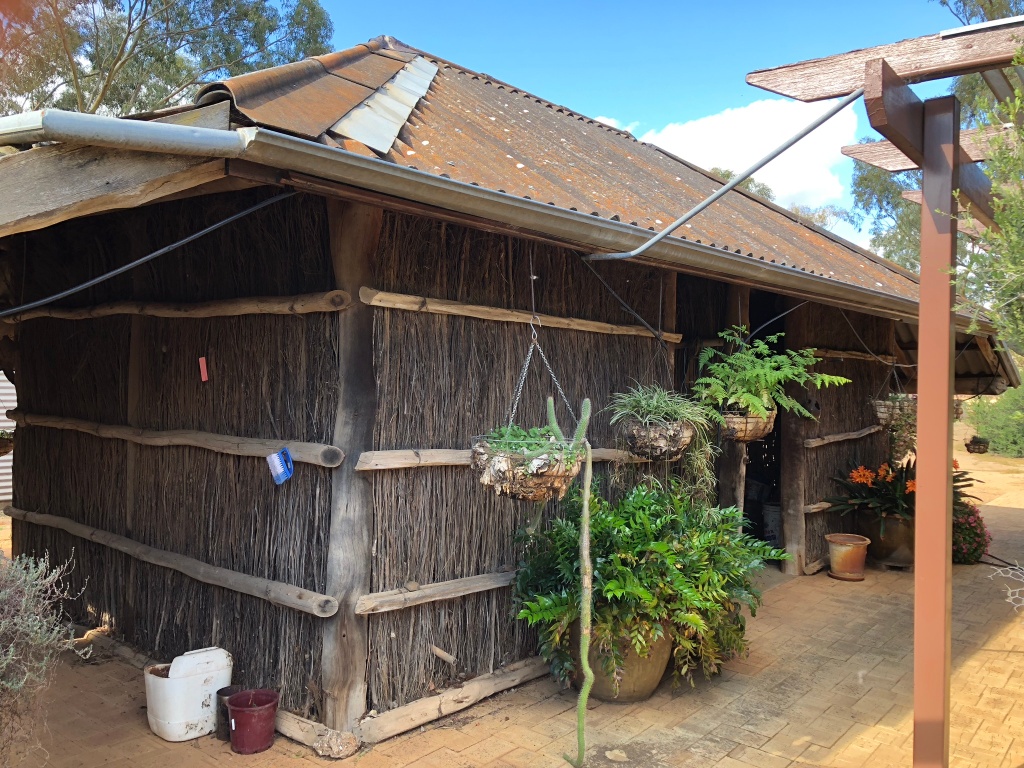
The bough shed on the north side of the house was also constructed very early and is of similar construction to the original stables. It contained the Coolgardie safe. (A container dripped water onto the top of the timber framed, hessian walled safe with the surplus being collected for further use in a galvanised tray at the base. The legs stood in tins of water to deter ants). The men ate at the table there.
The bough shed was also the coolest available haven in summer for Sam when he became very ill with TB in 1914. The east side had a wooden floor, which was the side Sam used, and was later Wendy’s cubby set up as a house with a door to keep her cats out. The bough shed had its thatch roof replaced by dressed timber purloins and corrugated asbestos sheeting in 1964. The roof is pyramid shaped and forms low eaves on three sides. There are entry doors on the south side and both sides now have a concrete floor.
Maids’ Rooms (built circa 1912)
This is a small rectangular building adjacent to, west of the homestead. Roofed and clad with corrugated iron and now set on railway iron stumps, the building is divided into two sections. Each section has a single entry door with a four paned timber framed window to both the north and south elevation. The maid’s room to the east has a timber ceiling, and was the only one ever occupied by a maid, who must have found it very cold in winter, and very hot in summer. The other section is unlined and has only ever been used for storage.
**Now located on the Koobabbie Precinct in Coorow**
El Cala (Wandoa) Homestead
Built in 1927 for Samuel Arnold and Clarice Lavinia Rudduck on their marriage at a cost of 1000 pounds. It was a wedding gift to Clarice from Sam and Alice
Ablutions Block (built 1952)
Made of cement brick with asbestos roof, consisting of bathroom, laundry and toilet was built to service the shearer’s quarters, Leo’s camp and Don’s camp (Don’s camp was demolished in 19 70’s)
White Storeroom and Laundry (built circa 1908 )
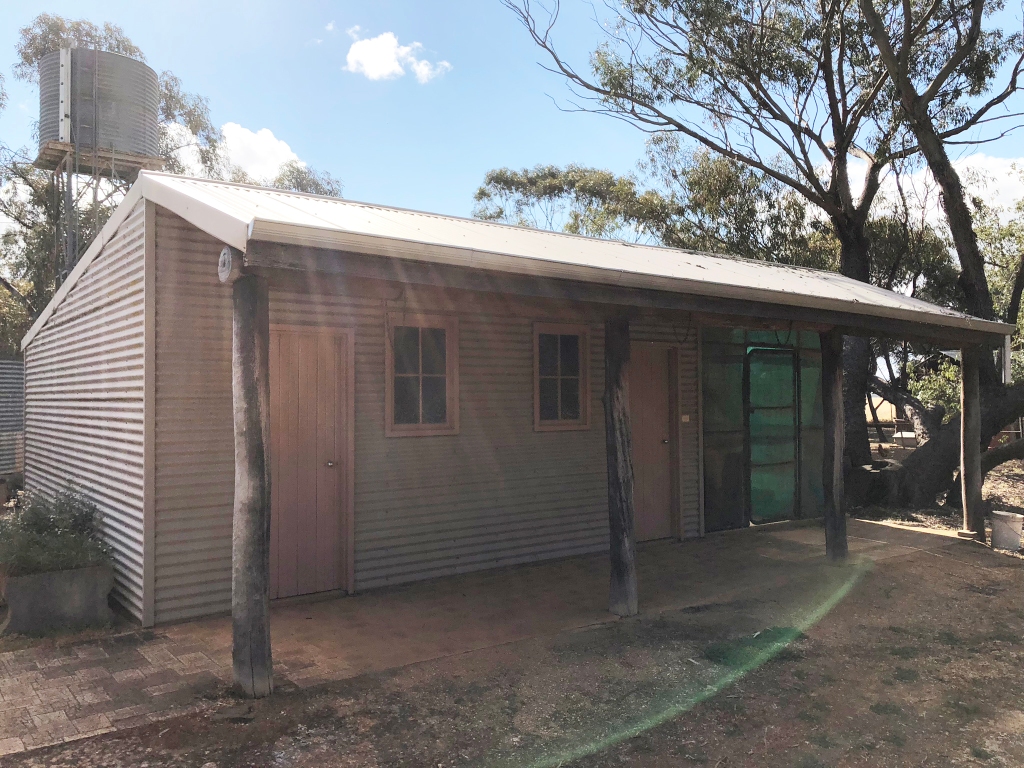
This was timber framed, with corrugated iron walls and roof. South end was store room, north end was laundry with throughs and copper. This laundry served both the original house and the new one. The horizontal corrugated iron walls were painted with calcamite. In the 1980s it was rebuilt with storage again at the south end but a bathroom/laundry at the north end. The 2 windows and 2 wooden doors were from the original house.
Outside Toilet (circa 1908)
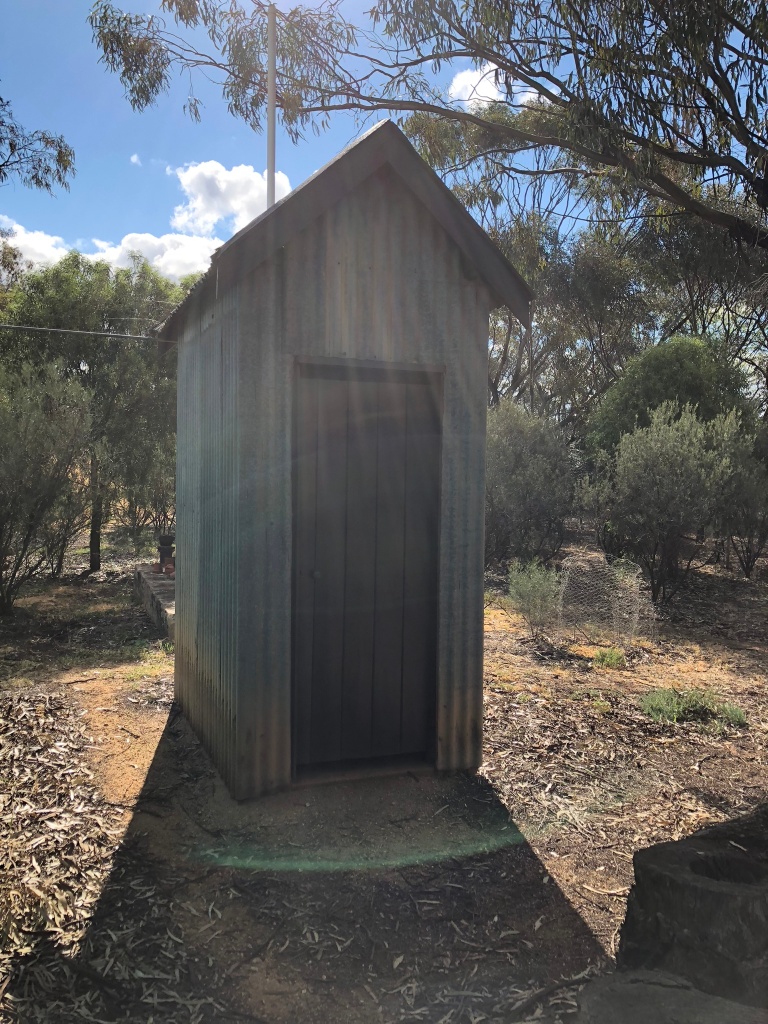
Timber framed with corrugated iron walls and roof, and still used by guests until this day.
This is traditionally considered quite a noisy toilet, as visitors to the farm tend to make startled noises when geckoes drop on them.
